
- Privacy Policy

Transition Words and Phrases for Japanese Essays
June 9, 2020
By Alexis Papa
Are you having a hard time connecting between your ideas in your Japanese essay? In this article, we have listed useful transition words and phrases that you can use to help you let your ideas flow and have an organized essay.

Japanese Phrases for Giving Examples and Emphasis
For example,
がいこく、たとえばちゅうごくへいったことがありますか。 Gaikoku, tatoeba Chuugoku e itta koto ga arimasu ka?
Have you been abroad, for instance China?
たぶんちゅうごくへいったことがあります。 Tabun Chuugoku e itta koto ga arimasu.
I have probably been to China.
Japanese Essay Phrases: General Explaining
しけんにごうかくするのために、まじめにべんきょうしなきゃ。 Shiken ni goukaku suru no tame ni, majime ni benkyou shinakya.
In order to pass the exam, I must study.
あしたあめがふるそう。だから、かさをもってきて。 Ashita ame ga furu sou. Dakara, kasa wo motte kite.
It seems that it will rain tomorrow. So, bring an umbrella.
Showing Sequence
まず、あたらしいさくぶんのがいせつをしようとおもう。 Mazu, atarashii sakubun no gaisetsu wo shiyou to omou.
First, I am going to do an outline of my new essay.
つぎに、さくぶんをかきはじめます。 Tsugi ni, sakubun wo kaki hajimemasu.
Then, I will begin writing my essay.
Adding Supporting Statements
かれはブレーキをかけ、そしてくるまはとまった。 Kare wa bureki wo kake, soshite kuruma wa tomatta.
He put on the brakes and then the car stopped.
いえはかなりにみえたし、しかもねだんがてごろだった。 Ie wa kanari ni mieta shi, shikamo nedan ga tegoro datta.
The house looked good; moreover,the (selling) price was right.
Demonstrating Contrast
にほんごはむずかしいですが、おもしろいです。 Nihongo wa muzukashii desu ga, omoshiroi desu.
Although Japanese language is difficult, it is enjoyable.
にほんごはむずかしいです。でも、おもしろいです。 Nihongo wa muzukashii desu. Demo, omoshiroi desu.
Japanese language is difficult. Nevertheless, it is enjoyable.
にほんごはむずかしいです。しかし、おもしろいです。 Nihondo wa muzukashii desu. Shikashi, omoshiroi desu.
Japanese language is difficult. However, it is enjoyable.
にほんごはむずかしいですけれど、おもしろいです。 Nihongo wa muzakashii desu keredo, omoshiroi desu.
Japanese Essay Phrases for Summarizing
われわれはこのはなしはじつわだというけつろんにたっした。 Wareware wa kono hanashi wa jitsuwa da to iu ketsuron ni tasshita.
We have come to a conclusion that this is a true story.
Now that you have learned these Japanese transitional words and phrases, we hope that your Japanese essay writing has become easier. Leave a comment and write examples of sentences using these Japanese essay phrases!
Alexis Papa
Alexis is a Japanese language and culture enthusiast from the Philippines. She is a Japanese Studies graduate, and has worked as an ESL and Japanese instructor at a local language school. She enjoys her free time reading books and watching series.
Your Signature
Subscribe to our newsletter now!
LEARN JAPANESE WITH MY FREE LEARNING PACKAGE
- 300 Useful Japanese Adjectives E-book
- 100 Days of Japanese Words and Expressions E-book

Sign up below and get instant access to the free package!
- KU Libraries
- Subject & Course Guides
- Resource Guide for Japanese Language Students
Resource Guide for Japanese Language Students: Essays
- Short Stories
- Translated Foreign Literature
- Japanese and English
- Comics with Furigana
- Comics with no Furigana
- Picture Books
- Online Reading Materials
- Apps, Sites, Extensions, and Podcasts
- For Listening Practice: Read Aloud Picture Books
- For Listening Practice: Children's Literature
- For Listening Practice: Young Adults
- Japanese-Language Proficiency Test (JLPT)
- Japanese Research & Bibliographic Methods for Undergraduates
- Japan Studies This link opens in a new window
- Guidebooks for Academic and Business Writing
About This Page
This page introduces the variety of essays written by popular contemporary authors. Unless noted, all are in Japanese.
The author, さくらももこ, is known for writing a comic titled 『 ちびまる子ちゃん 』. The comic is based on her own childhood experiences and depicts the everyday life of a girl with a nickname of Chibi Maruko-chan. The author has been constantly writing casual and humorous essays, often recollecting her childhood memories. We have both the『 ちびまる子ちゃん 』 comic series and other essays by the author.
To see a sample text in a new tab, please click on the cover image or the title .
中島らも(1952-2004) started his career as a copyrigher but changed his path to become a prolific writer, publishing novels, essays, drama scripts and rakugo stories. He became popular with his "twisted sense of humour." He is also active in the music industry when he formed his own band. He received the 13th Eiji Yoshikawa New Author Prize with his 『今夜、すべてのバーで』 and Mystery Writers of Japan Aaward with 『 ガダラの豚 』.
東海林(しょうじ)さだお
東海林さだお(1937-) is a well-known cartoonist, but he is also famous for his essays on food. His writing style is light and humorous and tends to pay particular attention toward regular food, such as bananas, miso soup, and eggd in udon noodles, rather than talk about gourmet meals. (added 5/2/2014)
Collection of Essays: 天声人語 = Vox Populi, Vox Deli (Bilingual)
A collection of essays which appear on the front page of Asahi Shinbun . Each essay is approx. 600 words. KU has collections published around 2000. Seach KU Online catalog with call number AC145 .T46 for more details.
To see a sample text, please click on the cover image or the title .
Other Essays

Online Essay
- 村上さんのところ "Mr. Murakami's Place" -- Haruki Murakami's Advice Column Part of Haruki Murakami's official site. He answers questions sent to this site. He will also take questions in English. Questions will be accepted until Jan. 31, 2015.
Search from KU Collection
If you are looking for essays in Japanese available at KU, use this search box. If you know the author, search by last name, then first name, such as "Sakura, Momoko." Make sure to select "Author" in the search field option.:
- << Previous: Level 4
- Next: Short Stories >>
- Last Updated: Feb 1, 2024 11:08 AM
- URL: https://guides.lib.ku.edu/c.php?g=95189
Unconventional language hacking tips from Benny the Irish polyglot; travelling the world to learn languages to fluency and beyond!
Looking for something? Use the search field below.
Home » Articles » How to Write in Japanese — A Beginner’s Guide to Japanese Writing
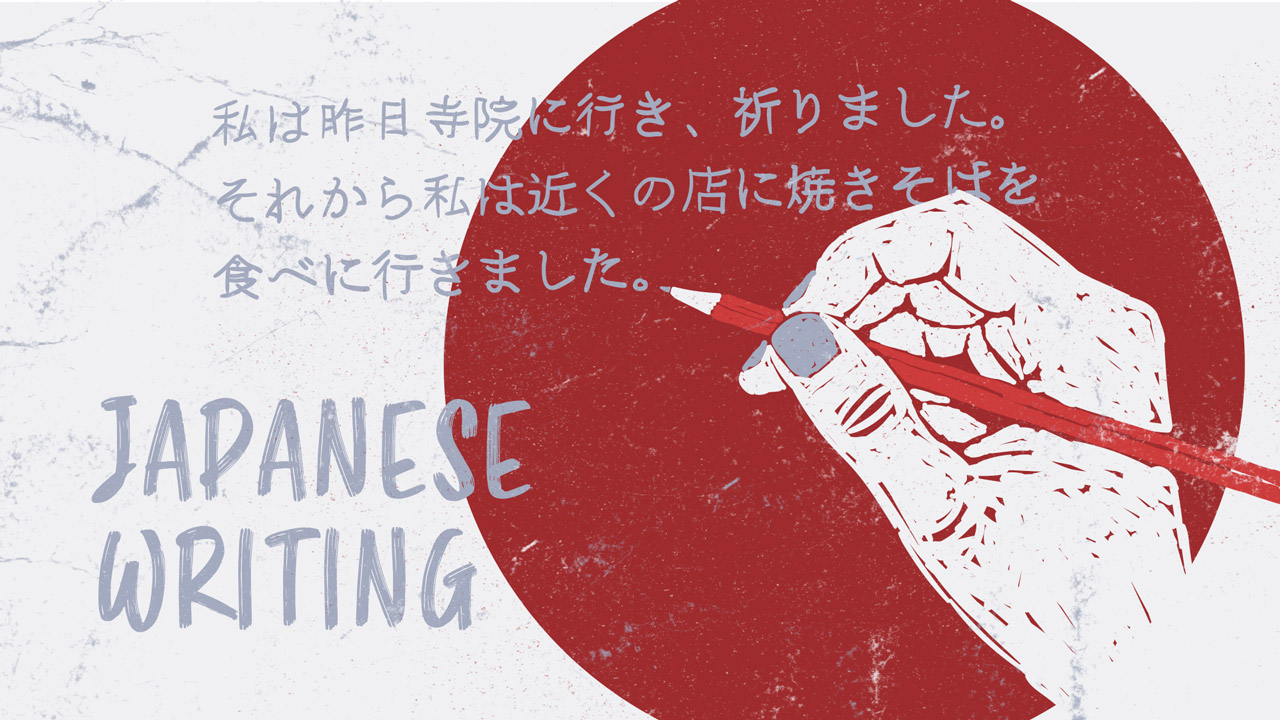
Full disclosure: This post contains affiliate links. ?
written by Caitlin Sacasas
Language: Japanese
Reading time: 13 minutes
Published: Apr 2, 2021
Updated: Oct 18, 2021
How to Write in Japanese — A Beginner’s Guide to Japanese Writing
Does the Japanese writing system intimidate you?
For most people, this seems like the hardest part of learning Japanese. How to write in Japanese is a bit more complex than some other languages. But there are ways to make it easier so you can master it!
Here at Fluent in 3 Months , we encourage actually speaking over intensive studying, reading, and listening. But writing is an active form of learning too, and crucial for Japanese. Japanese culture is deeply ingrained in its writing systems. If you can’t read or write it, you’ll struggle as you go along in your studies.
Some of the best Japanese textbooks expect you to master these writing systems… fast . For instance, the popular college textbook Genki , published by the Japan Times, expects you to master the basics in as little as a week. After that, they start to phase out the romanized versions of the word.
It’s also easy to mispronounce words when they’re romanized into English instead of the original writing system. If you have any experience learning how to write in Korean , then you know that romanization can vary and the way it reads isn’t often how it’s spoken.
Despite having three writing systems, there are benefits to it. Kanji, the “most difficult,” actually makes memorizing vocabulary easier!
So, learning to write in Japanese will go a long way in your language studies and help you to speak Japanese fast .
Why Does Japanese Have Three Writing Systems? A Brief Explainer
Japanese has three writing systems: hiragana, katakana, and kanji. The first two are collectively called kana and are the basics of writing in Japanese.
Writing Kana
If you think about English, we have two writing systems — print and cursive. Both print and cursive write out the same letters, but they look “sharp” and “curvy.” The same is true for kana. Hiragana is “curvy” and katakana is “sharp,” but they both represent the same Japanese alphabet (which is actually called a syllabary). They both represent sounds, or syllables, rather than single letters (except for vowels and “n”, hiragana ん or katakana ン). Hiragana and katakana serve two different purposes.
Hiragana is the most common, and the first taught to Japanese children. If this is all you learn, you would be understood (although you’d come across child-like). Hiragana is used for grammar functions, like changing conjugation or marking the subject of a sentence. Because of this, hiragana helps break up a sentence when combined with kanji. It makes it easier to tell where a word begins and ends, especially since Japanese doesn’t use spaces. It’s also used for furigana, which are small hiragana written next to kanji to help with the reading. You see furigana often in manga , Japanese comics, for younger audiences who haven’t yet learned to read all the kanji. (Or learners like us!)
Katakana serves to mark foreign words. When words from other languages are imported into Japanese, they’re often written in Japanese as close as possible to the original word. (Like how you can romanize Japanese into English, called romaji). For example, パン ( pan ) comes from Spanish, and means “bread.” Or from English, “smartphone” is スマートフォン ( suma-tofon ) or shortened, slang form スマホ ( sumaho ). Katakana can also be used to stylistically write a Japanese name, to write your own foreign name in Japanese, or to add emphasis to a word when writing.
Writing Kanji
Then there’s kanji. Kanji was imported from Chinese, and each character means a word, instead of a syllable or letter. 犬, read inu , means “dog.” And 食, read ta or shoku , means “food” or “to eat.” They combine with hiragana or other kanji to complete their meaning and define how you pronounce them.
So if you wanted to say “I’m eating,” you would say 食べます ( tabemasu ), where -bemasu completes the verb and puts it in grammatical tense using hiragana. If you wanted to say “Japanese food,” it would be 日本食 ( nipponshoku ), where it’s connected to other kanji.
If you didn’t have these three forms, it would make reading Japanese very difficult. The sentences would run together and it would be confusing. Like in this famous Japanese tongue twister: にわにはにわにわとりがいる, or romanized niwa ni wa niwa niwatori ga iru . But in kanji, it looks like 庭には二羽鶏がいる. The meaning? “There are chickens in the garden.” Thanks to the different writing systems, we know that the first niwa means garden, the second ni wa are the grammatical particles, the third niwa is to say there are at least two, and niwatori is “chickens.”
Japanese Pronunciation
Japanese has fewer sounds than English, and except for “r,” most of them are in the English language. So you should find most of the sounds easy to pick up!
Japanese has the same 5 vowels, but only 16 consonants. For the most part, all syllables consist of only a vowel, or a consonant plus a vowel. But there is the single “n,” and “sh,” “ts,” and “ch” sounds, as well as consonant + -ya/-yu/-yo sounds. I’ll explain this more in a minute.
Although Japanese has the same 5 vowel sounds, they only have one sound . Unlike English, there is no “long A” and “short A” sound. This makes it easy when reading kana because the sound never changes . So, once you learn how to write kana, you will always know how to pronounce it.
Here’s how the 5 vowels sound in Japanese:
- あ / ア: “ah” as in “latte”
- い / イ: “ee” as in “bee”
- う / ウ: “oo” as in “tooth”
- え / エ: “eh” as in “echo”
- お / オ: “oh” as in “open”
Even when combined with consonants, the sound of the vowel stays the same. Look at these examples:
- か / カ: “kah” as in “copy”
- ち / チ: “chi” as in “cheap”
- む / ム: “mu” as in “move”
- せ / セ: “se” as in “set”
- の / ノ: “no” as in “note”
Take a look at the entire syllabary chart:
Based on learning how to pronounce the vowels, can you pronounce the rest of the syllables? The hardest ones will be the R-row of sounds, “tsu,” “fu,” and “n.”
For “r” it sounds between an “r” and an “l” sound in English. Almost like the Spanish, actually. First, try saying “la, la, la.” Your tongue should push off of the back of your teeth to make this sound. Now say “rah, rah, rah.” Notice how your tongue pulls back to touch your back teeth. Now, say “dah, dah, dah.” That placement of your tongue to make the “d” sound is actually where you make the Japanese “r” sound. You gently push off of this spot on the roof of your mouth as you pull back your tongue like an English “r.”
“Tsu” blends together “t” and “s” in a way we don’t quite have in English. You push off the “t” sound, and should almost sound like the “s” is drawn out. The sound “fu” is so soft, and like a breath of air coming out. Think like a sigh, “phew.” It doesn’t sound like “who,” but a soft “f.” As for our lone consonant, “n” can sound like “n” or “m,” depending on the word.
Special Japanese Character Readings and How to Write Them
There are a few Japanese characters that combine with others to create more sounds. You’ll often see dakuten , which are double accent marks above the character on the right side ( ゙), and handakuten , which is a small circle on the right side ( ゚).
Here’s how dakuten affect the characters:
And handakuten are only used with the H-row characters, changing it from “h” to “p.” So か ( ka ) becomes が ( ga ), and ひ ( hi ) becomes either び ( bi ) or ぴ ( pi ).
A sokuon adds a small っ between two characters to double the consonant that follows it and make a “stop” in the word. In the saying いらっしゃいませ ( irasshaimase , “Welcome!”), the “rahs-shai” has a slight glottal pause where the “tsu” emphasizes the double “s.”
One of the special readings that tend to be mispronounced are the yoon characters. These characters add a small “y” row character to the other rows to blend the sounds together. These look like ちゃ ( cha ), きょ ( kyo ), and しゅ ( shu ). They’re added to the “i” column of kana characters.
An example of a common mispronunciation is “Tokyo.” It’s often said “Toh-key-yo,” but it’s actually only two syllables: “Toh-kyo.” The k and y are blended; there is no “ee” sound in the middle.
How to Read, Write, and Pronounce Kanji Characters
Here’s where things get tricky. Kanji, since it represents a whole word or idea, and combines with hiragana… It almost always has more than one way to read and pronounce it. And when it comes to writing them, they have a lot more to them.
Let’s start by breaking down the kanji a bit, shall we?
Most kanji consist of radicals, the basic elements or building blocks. For instance, 日 (“sun” or “day”) is a radical. So is 言 (“words” or “to say”) and 心 (“heart”). So when we see the kanji 曜, we see that “day” has been squished in this complex kanji. This kanji means “day of the week.” It’s in every weekday’s name: 月曜日 ( getsuyoubi , “Monday”), 火曜日 ( kayoubi , “Tuesday”), 水曜日 ( suiyoubi , “Wednesday”), etc.
When the kanji for “words” is mixed into another kanji, it usually has something to do with conversation or language. 日本語 ( nihongo ) is the word for “Japanese” and the final kanji 語 includes 言. And as for 心, it’s often in kanji related to expressing emotions and feelings, like 怒る ( okoru , “angry”) and 思う ( omou , “to think”).
In this way, some kanji make a lot of sense when we break them down like this. A good example is 妹 ( imouto ), the kanji for “little sister.” It’s made up of two radicals: 女, “woman,” and 未, “not yet.” She’s “not yet a woman,” because she’s your kid sister.
So why learn radicals? Because radicals make it easier to memorize, read, and write the kanji. By learning radicals, you can break the kanji down using mnemonics (like “not yet a woman” to remember imouto ). If you know each “part,” you’ll remember how to write it. 妹 has 7 strokes to it, but only 2 radicals. So instead of memorizing tons of tiny lines, memorize the parts.
As for pronouncing them, this is largely a memorization game. But here’s a pro-tip. Each kanji has “common” readings — often only one or two. Memorize how to read the kanji with common words that use them, and you’ll know how to read that kanji more often than not.
Japanese Writing: Stroke Order
So, I mentioned stroke order with kanji. But what is that? Stroke order is the proper sequence you use to write Japanese characters.
The rule of stroke order is you go from top to bottom, left to right.
This can still be confusing with some complex kanji, but again, radicals play a part here. You would break down each radical top left-most stroke to bottom right stroke, then move on to the next radical. A helpful resource is Jisho.org , which shows you how to properly write all the characters. Check out how to write the kanji for “kanji” as a perfect example of breaking down radicals.
When it comes to kana, stroke order still matters. Even though they’re simpler, proper stroke order makes your characters easier to read. And some characters rely on stroke order to tell them apart. Take シ and ツ:
[Shi and Tsu example]
If you didn’t use proper stroke order, these two katakana characters would look the same!
How to Memorize Japanese Kanji and Kana
When it comes to Japanese writing, practice makes perfect. Practice writing your sentences down in Japanese, every day. Practice filling in the kana syllabary chart for hiragana and katakana, until there are no blank boxes and you’ve got them all right.
Create mnemonics for both kanji and kana. Heisig’s method is one of the best ways to memorize how to write kanji with mnemonics. Using spaced repetition helps too, like Anki. Then you’re regularly seeing each character, and you can input your mnemonics into the note of the card so you have it as a reminder.
Another great way to practice is to write out words you already know. If you know mizu means “water,” then learn the kanji 水 and write it with the kanji every time from here on out. If you know the phrase おはようございます means “good morning,” practice writing in in kana every morning. That phrase alone gives you practice with 9 characters and two with dakuten! And try looking up loan words to practice katakana.
Tools to Help You with Japanese Writing
There are some fantastic resources out there to help you practice writing in Japanese. Here are a few to help you learn it fast:
- JapanesePod101 : Yes, JapanesePod101 is a podcast. But they often feature YouTube videos and have helpful PDFs that teach you kanji and kana! Plus, you’ll pick up all kinds of helpful cultural insights and grammar tips.
- LingQ : LingQ is chock full of reading material in Japanese, giving you plenty of exposure to kana, new kanji, and words. It uses spaced repetition to help you review.
- Skritter : Skritter is one of the best apps for Japanese writing. You can practice writing kanji on the app, and review them periodically so you don’t forget. It’s an incredible resource to keep up with your Japanese writing practice on the go.
- Scripts : From the creator of Drops, this app was designed specifically for learning languages with a different script from your own.
How to Type in Japanese
It’s actually quite simple to type in Japanese! On a PC, you can go to “Language Settings” and click “Add a preferred language.” Download Japanese — 日本語 — and make sure to move it below English. (Otherwise, it will change your laptop’s language to Japanese… Which can be an effective study tool , though!)
To start typing in Japanese, you would press the Windows key + space. Your keyboard will now be set to Japanese! You can type the romanized script, and it will show you the suggestions for kanji and kana. To easily change back and forth between Japanese and English, use the alt key + “~” key.
For Mac, you can go to “System Preferences”, then “Keyboard” and then click the “+” button to add and set Japanese. To toggle between languages, use the command key and space bar.
For mobile devices, it’s very similar. You’ll go to your settings, then language and input settings. Add the Japanese keyboard, and then you’ll be able to toggle back and forth when your typing from the keyboard!
Japanese Writing Isn’t Scary!
Japanese writing isn’t that bad. It does take practice, but it’s fun to write! It’s a beautiful script. So, don’t believe the old ideology that “three different writing systems will take thousands of hours to learn!” A different writing system shouldn’t scare you off. Each writing system has a purpose and makes sense once you start learning. They build on each other, so learning it gets easier as you go. Realistically, you could read a Japanese newspaper after only about two months of consistent studying and practice with kanji!

Caitlin Sacasas
Content Writer, Fluent in 3 Months
Caitlin is a copywriter, content strategist, and language learner. Besides languages, her passions are fitness, books, and Star Wars. Connect with her: Twitter | LinkedIn
Speaks: English, Japanese, Korean, Spanish
Have a 15-minute conversation in your new language after 90 days
- Skip to primary navigation
- Skip to main content
- Skip to primary sidebar
- Skip to footer
StoryLearning
Learn A Language Through Stories
How To Write In Japanese – A Beginner’s Guide
Do you want to learn how to write in Japanese , but feel confused or intimidated by the script?
This post will break it all down for you, in a step-by-step guide to reading and writing skills this beautiful language.
I remember when I first started learning Japanese and how daunting the writing system seemed. I even wondered whether I could get away without learning the script altogether and just sticking with romaji (writing Japanese with the roman letters).
I’m glad I didn’t.
If you’re serious about learning Japanese, you have to get to grips with the script sooner or later. If you don’t, you won’t be able to read or write anything useful, and that’s no way to learn a language.
The good news is that it isn’t as hard as you think. And I’ve teamed up with my friend Luca Toma (who’s also a Japanese coach ) to bring you this comprehensive guide to reading and writing Japanese.
By the way, if you want to learn Japanese fast and have fun while doing it, my top recommendation is Japanese Uncovered which teaches you through StoryLearning®.
With Japanese Uncovered you’ll use my unique StoryLearning® method to learn Japanese naturally through story… not rules. It’s as fun as it is effective.
If you’re ready to get started, click here for a 7-day FREE trial.
If you have a friend who’s learning Japanese, you might like to share it with them. Now, let’s get stuck in…
One Language, Two Systems, Three Scripts
If you are a complete beginner, Japanese writing may appear just like Chinese.
But if you look at it more carefully you'll notice that it doesn’t just contain complex Chinese characters… there are lots of simpler ones too.
Take a look.
それでも、 日本人 の 食生活 も 急速 に 変化 してきています 。 ハンバーグ や カレーライス は 子供に人気 がありますし 、都会 では 、 イタリア 料理、東南 アジア 料理、多国籍料理 などを 出 す エスニック 料理店 がどんどん 増 えています 。
Nevertheless, the eating habits of Japanese people are also rapid ly chang ing . Hamburgers and curry rice are popular with children . In cities , ethnic restaurants serv ing Italian cuisine , Southeast Asian cuisine and multi-national cuisine keep increas ing more and more .
(Source: “Japan: Then and Now”, 2001, p. 62-63)
As you can see from this sample, within one Japanese text there are actually three different scripts intertwined. We’ve colour coded them to help you tell them apart.
(What’s really interesting is the different types of words – parts of speech – represented by each colour – it tells you a lot about what you use each of the three scripts for.)
Can you see the contrast between complex characters (orange) and simpler ones (blue and green)?
The complex characters are called kanji (漢字 lit. Chinese characters) and were borrowed from Chinese. They are what’s called a ‘logographic system' in which each symbol corresponds to a block of meaning (食 ‘to eat', 南 ‘south', 国 ‘country').
Each kanji also has its own pronunciation, which has to be learnt – you can’t “read” an unknown kanji like you could an unknown word in English.
Luckily, the other two sets of characters are simpler!
Those in blue above are called hiragana and those in green are called katakana . Katakana and hiragana are both examples of ‘syllabic systems', and unlike the kanji , each character corresponds to single sound. For example, そ= so, れ= re; イ= i, タ = ta.
Hiragana and katakana are a godsend for Japanese learners because the pronunciation isn’t a problem. If you see it, you can say it!
So, at this point, you’re probably wondering:
“What’s the point of using three different types of script? How could that have come about?”
In fact, all these scripts have a very specific role to play in a piece of Japanese writing, and you’ll find that they all work together in harmony in representing the Japanese language in a written form.
So let’s check them out in more detail.
First up, the two syllabic systems: hiragana and katakana (known collectively as kana ).
The ‘Kana' – One Symbol, One Sound
Both hiragana and katakana have a fixed number of symbols: 46 characters in each, to be precise.
Each of these corresponds to a combination of the 5 Japanese vowels (a, i, u, e o) and the 9 consonants (k, s, t, n, h, m, y, r, w).
(Source: Wikipedia Commons )
Hiragana (the blue characters in our sample text) are recognizable for their roundish shape and you’ll find them being used for three functions in Japanese writing:
1. Particles (used to indicate the grammatical function of a word)
は wa topic marker
が ga subject marker
を wo direct object marker
2. To change the meaning of verbs, adverbs or adjectives, which generally have a root written in kanji. (“Inflectional endings”)
急速 に kyuusoku ni rapid ly
増 えています fu ete imasu are increas ing
3. Native Japanese words not covered by the other two scripts
それでも soredemo nevertheless
どんどん dondon more and more
Katakana (the green characters in our sample text) are recognisable for their straight lines and sharp corners. They are generally reserved for:
1. Loanwords from other languages. See what you can spot!
ハンバーグ hanbaagu hamburger
カレーライス karee raisu curry rice
エスニック esunikku ethnic
2. Transcribing foreign names
イタリア itaria Italy
アジア ajia Asia
They are also used for emphasis (the equivalent of italics or underlining in English), and for scientific terms (plants, animals, minerals, etc.).
So where did hiragana and katakana come from?
In fact, they were both derived from kanji which had a particular pronunciation; Hiragana took from the Chinese cursive script (安 an →あ a), whereas katakana developed from single components of the regular Chinese script (阿 a →ア a ).
So that covers the origins the two kana scripts in Japanese, and how we use them.
Now let’s get on to the fun stuff… kanji !
The Kanji – One Symbol, One Meaning
Kanji – the most formidable hurdle for learners of Japanese!
We said earlier that kanji is a logographic system, in which each symbol corresponds to a “block of meaning”.
食 eating
生 life, birth
活 vivid, lively
“Block of meaning” is the best phrase, because one kanji is not necessarily a “word” on its own.
You might have to combine one kanji with another in order to make an actual word, and also to express more complex concepts:
生 + 活 = 生活 lifestyle
食 + 生活 = 食生活 eating habits
If that sounds complicated, remember that you see the same principle in other languages.
Think about the word ‘telephone' in English – you can break it down into two main components derived from Greek:
‘tele' (far) + ‘phone' (sound) = telephone
Neither of them are words in their own right.
So there are lots and lots of kanji , but in order to make more sense of them we can start by categorising them.
There are several categories of kanji , starting with the ‘pictographs' (象形文字 sh ōkei moji), which look like the objects they represent:
(Source: Wikipedia Commons )
In fact, there aren’t too many of these pictographs.
Around 90% of the kanji in fact come from six other categories, in which several basic elements (called ‘radicals') are combined to form new concepts.
For example:
人 (‘man' as a radical) + 木 (‘tree') = 休 (‘to rest')
These are known as 形声文字 keisei moji or ‘radical-phonetic compounds'.
You can think of these characters as being made up of two parts:
- A radical that tells you what category of word it is: animals, plants, metals, etc.)
- A second component that completes the character and give it its pronunciation (a sort of Japanese approximation from Chinese).
So that’s the story behind the kanji , but what are they used for in Japanese writing?
Typically, they are used to represent concrete concepts.
When you look at a piece of Japanese writing, you’ll see kanji being used for nouns, and in the stem of verbs, adjectives and adverbs.
Here are some of them from our sample text at the start of the article:
日本人 Japanese people 多国籍料理 multinational cuisine 東南 Southeast
Now, here’s the big question!
Once you’ve learnt to read or write a kanji , how do you pronounce it?
If you took the character from the original Chinese, it would usually only have one pronunciation.
However, by the time these characters leave China and reach Japan, they usually have two or sometimes even more pronunciations.
How or why does this happen?
Let's look at an example.
To say ‘mountain', the Chinese use the pictograph 山 which depicts a mountain with three peaks. The pronunciation of this character in Chinese is sh ā n (in the first tone).
Now, in Japanese the word for ‘mountain' is ‘yama'.
So in this case, the Japanese decided to borrow the character山from Chinese, but to pronounce it differently: yama .
However, this isn’t the end of the story!
The Japanese did decide to borrow the pronunciation from the original Chinese, but only to use it when that character is used in compound words.
So, in this case, when the character 山 is part of a compound word, it is pronounced as san/zan – clearly an approximation to the original Chinese pronunciation.
Here’s the kanji on its own:
山は… Yama wa… The mountain….
And here’s the kanji when it appears in compound words:
火山は… Ka zan wa The volcano…
富士山は… Fuji san wa… Mount Fuji….
To recap, every kanji has at least two pronunciations.
The first one (the so-called訓読み kun'yomi or ‘meaning reading') has an original Japanese pronunciation, and is used with one kanji on it’s own.
The second one (called音読み on'yomi or ‘sound-based reading') is used in compound words, and comes from the original Chinese.
Makes sense, right? 😉
In Japan, there’s an official number of kanji that are classified for “daily use” (常用漢字 joy ō kanji ) by the Japanese Ministry of Education – currently 2,136.
(Although remember that the number of actual words that you can form using these characters is much higher.)
So now… if you wanted to actually learn all these kanji , how should you go about it?
To answer this question, Luca’s going to give us an insight into how he did it.
How I Learnt Kanji
I started to learn kanji more than 10 years ago at a time when you couldn't find all the great resources that are available nowadays. I only had paper kanji dictionary and simple lists from my textbook.
What I did have, however, was the memory of a fantastic teacher.
I studied Chinese for two years in college, and this teacher taught us characters in two helpful ways:
- He would analyse them in terms of their radicals and other components
- He kept us motivated and interested in the process by using fascinating stories based on etymology (the origin of the characters)
Once I’d learnt to recognise the 214 radicals which make up all characters – the building blocks of Chinese characters – it was then much easier to go on and learn the characters and the words themselves.
It’s back to the earlier analogy of dividing the word ‘telephone' into tele and phone .
But here’s the thing – knowing the characters alone isn’t enough. There are too many, and they’re all very similar to one another.
If you want to get really good at the language, and really know how to read and how to write in Japanese, you need a higher-order strategy.
The number one strategy that I used to reach a near-native ability in reading and writing in Japanese was to learn the kanji within the context of dialogues or other texts .
I never studied them as individual characters or words.
Now, I could give you a few dozen ninja tricks for how to learn Japanese kanji. B ut the one secret that blows everything else out of the water and guarantees real success in the long-term, is extensive reading and massive exposure.
This is the foundation of the StoryLearning® method , where you immerse yourself in language through story.
In the meantime, there are a lot of resources both online and offline to learn kanji , each of which is based on a particular method or approach (from flashcards to mnemonic and so on).
The decision of which approach to use can be made easier by understanding the way you learn best.
Do you have a photographic memory or prefer working with images? Do you prefer to listen to audio? Or perhaps you prefer to write things by hands?
You can and should try more than one method, in order to figure out which works best for you.
( Note : You should get a copy of this excellent guide by John Fotheringham, which has all the resources you’ll ever need to learn kanji )
Summary Of How To Write In Japanese
So you’ve made it to the end!
See – I told you it wasn’t that bad! Let’s recap what we’ve covered.
Ordinary written Japanese employs a mixture of three scripts:
- Kanji, or Chinese characters, of which there are officially 2,136 in daily use (more in practice)
- 2 syllabic alphabets called hiragana and katakana, containing 42 symbols each
In special cases, such as children’s books or simplified materials for language learners, you might find everything written using only hiragana or katakana .
But apart from those materials, everything in Japanese is written by employing the three scripts together. And it’s the kanji which represent the cultural and linguistic challenge in the Japanese language.
If you want to become proficient in Japanese you have to learn all three!
Although it seems like a daunting task, remember that there are many people before you who have found themselves right at the beginning of their journey in learning Japanese.
And every journey begins with a single step.
So what are you waiting for?
The best place to start is to enrol in Japanese Uncovered . The course includes a series of lessons that teach you hiragana, katakana and kanji. It also includes an exciting Japanese story which comes in different formats (romaji, hiragana, kana and kanji) so you can practice reading Japanese, no matter what level you're at right now.
– – –
It’s been a pleasure for me to work on this article with Luca Toma, and I’ve learnt a lot in the process.
Now he didn’t ask me to write this, but if you’re serious about learning Japanese, you should consider hiring Luca as a coach. The reasons are many, and you can find out more on his website: JapaneseCoaching.it
Do you know anyone learning Japanese? Why not send them this article, or click here to send a tweet .
Language Courses
- Language Blog
- Testimonials
- Meet Our Team
- Media & Press
Download this article as a FREE PDF ?
What is your current level in Swedish?
Perfect! You’ve now got access to my most effective [level] Swedish tips…
Where shall I send the tips and your PDF?
We will protect your data in accordance with our data policy.
What is your current level in Danish?
Perfect! You’ve now got access to my most effective [level] Danish tips…
NOT INTERESTED?
What can we do better? If I could make something to help you right now, w hat would it be?
Which language are you learning?
What is your current level in [language] ?
Perfect! You’ve now got access to my most effective [level] [language] tips, PLUS your free StoryLearning Kit…
Where shall I send them?
Download this article as a FREE PDF?
Great! Where shall I send my best online teaching tips and your PDF?
Download this article as a FREE PDF ?
What is your current level in Arabic?
Perfect! You’ve now got access to my most effective [level] Arabic tips…
FREE StoryLearning Kit!
Join my email newsletter and get FREE access to your StoryLearning Kit — discover how to learn languages through the power of story!
Download a FREE Story in Japanese!
Enter your email address below to get a FREE short story in Japanese and start learning Japanese quickly and naturally with my StoryLearning® method!
What is your current level in Japanese?
Perfect! You’ve now got access to the Japanese StoryLearning® Pack …
Where shall I send your download link?
Download Your FREE Natural Japanese Grammar Pack
Enter your email address below to get free access to my Natural Japanese Grammar Pack and learn to internalise Japanese grammar quickly and naturally through stories.
Perfect! You’ve now got access to the Natural Japanese Grammar Pack …
What is your current level in Portuguese?
Perfect! You’ve now got access to the Natural Portuguese Grammar Pack …
What is your current level in German?
Perfect! You’ve now got access to the Natural German Grammar Pack …
Train as an Online Language Teacher and Earn from Home
The next cohort of my Certificate of Online Language Teaching will open soon. Join the waiting list, and we’ll notify you as soon as enrolment is open!
Perfect! You’ve now got access to my most effective [level] Portuguese tips…
What is your current level in Turkish?
Perfect! You’ve now got access to my most effective [level] Turkish tips…
What is your current level in French?
Perfect! You’ve now got access to the French Vocab Power Pack …
What is your current level in Italian?
Perfect! You’ve now got access to the Italian Vocab Power Pack …
Perfect! You’ve now got access to the German Vocab Power Pack …
Perfect! You’ve now got access to the Japanese Vocab Power Pack …
Download Your FREE Japanese Vocab Power Pack
Enter your email address below to get free access to my Japanese Vocab Power Pack and learn essential Japanese words and phrases quickly and naturally. (ALL levels!)
Download Your FREE German Vocab Power Pack

Enter your email address below to get free access to my German Vocab Power Pack and learn essential German words and phrases quickly and naturally. (ALL levels!)
Download Your FREE Italian Vocab Power Pack
Enter your email address below to get free access to my Italian Vocab Power Pack and learn essential Italian words and phrases quickly and naturally. (ALL levels!)
Download Your FREE French Vocab Power Pack
Enter your email address below to get free access to my French Vocab Power Pack and learn essential French words and phrases quickly and naturally. (ALL levels!)
Perfect! You’ve now got access to the Portuguese StoryLearning® Pack …
What is your current level in Russian?
Perfect! You’ve now got access to the Natural Russian Grammar Pack …
Perfect! You’ve now got access to the Russian StoryLearning® Pack …
Perfect! You’ve now got access to the Italian StoryLearning® Pack …
Perfect! You’ve now got access to the Natural Italian Grammar Pack …
Perfect! You’ve now got access to the French StoryLearning® Pack …
Perfect! You’ve now got access to the Natural French Grammar Pack …
What is your current level in Spanish?
Perfect! You’ve now got access to the Spanish Vocab Power Pack …
Perfect! You’ve now got access to the Natural Spanish Grammar Pack …
Perfect! You’ve now got access to the Spanish StoryLearning® Pack …
Where shall I send them?
What is your current level in Korean?
Perfect! You’ve now got access to my most effective [level] Korean tips…
Perfect! You’ve now got access to my most effective [level] Russian tips…
Perfect! You’ve now got access to my most effective [level] Japanese tips…
What is your current level in Chinese?
Perfect! You’ve now got access to my most effective [level] Chinese tips…
Perfect! You’ve now got access to my most effective [level] Spanish tips…
Perfect! You’ve now got access to my most effective [level] Italian tips…
Perfect! You’ve now got access to my most effective [level] French tips…
Perfect! You’ve now got access to my most effective [level] German tips…
Download Your FREE Natural Portuguese Grammar Pack
Enter your email address below to get free access to my Natural Portuguese Grammar Pack and learn to internalise Portuguese grammar quickly and naturally through stories.
Download Your FREE Natural Russian Grammar Pack
Enter your email address below to get free access to my Natural Russian Grammar Pack and learn to internalise Russian grammar quickly and naturally through stories.
Download Your FREE Natural German Grammar Pack
Enter your email address below to get free access to my Natural German Grammar Pack and learn to internalise German grammar quickly and naturally through stories.
Download Your FREE Natural French Grammar Pack
Enter your email address below to get free access to my Natural French Grammar Pack and learn to internalise French grammar quickly and naturally through stories.
Download Your FREE Natural Italian Grammar Pack
Enter your email address below to get free access to my Natural Italian Grammar Pack and learn to internalise Italian grammar quickly and naturally through stories.
Download a FREE Story in Portuguese!

Enter your email address below to get a FREE short story in Brazilian Portuguese and start learning Portuguese quickly and naturally with my StoryLearning® method!
Download a FREE Story in Russian!
Enter your email address below to get a FREE short story in Russian and start learning Russian quickly and naturally with my StoryLearning® method!
Download a FREE Story in German!
Enter your email address below to get a FREE short story in German and start learning German quickly and naturally with my StoryLearning® method!
Perfect! You’ve now got access to the German StoryLearning® Pack …
Download a FREE Story in Italian!
Enter your email address below to get a FREE short story in Italian and start learning Italian quickly and naturally with my StoryLearning® method!
Download a FREE Story in French!

Enter your email address below to get a FREE short story in French and start learning French quickly and naturally with my StoryLearning® method!
Download a FREE Story in Spanish!
Enter your email address below to get a FREE short story in Spanish and start learning Spanish quickly and naturally with my StoryLearning® method!
FREE Download:
The rules of language learning.

Enter your email address below to get free access to my Rules of Language Learning and discover 25 “rules” to learn a new language quickly and naturally through stories.
What can we do better ? If I could make something to help you right now, w hat would it be?
What is your current level in [language]?
Perfect! You’ve now got access to my most effective [level] [language] tips…
Download Your FREE Spanish Vocab Power Pack

Enter your email address below to get free access to my Spanish Vocab Power Pack and learn essential Spanish words and phrases quickly and naturally. (ALL levels!)
Download Your FREE Natural Spanish Grammar Pack
Enter your email address below to get free access to my Natural Spanish Grammar Pack and learn to internalise Spanish grammar quickly and naturally through stories.
Free Step-By-Step Guide:
How to generate a full-time income from home with your English… even with ZERO previous teaching experience.
What is your current level in Thai?
Perfect! You’ve now got access to my most effective [level] Thai tips…
What is your current level in Cantonese?
Perfect! You’ve now got access to my most effective [level] Cantonese tips…
Steal My Method?
I’ve written some simple emails explaining the techniques I’ve used to learn 8 languages…
I want to be skipped!
I’m the lead capture, man!
Join 84,574 other language learners getting StoryLearning tips by email…
“After I started to use your ideas, I learn better, for longer, with more passion. Thanks for the life-change!” – Dallas Nesbit
Perfect! You’ve now got access to my most effective [level] [language] tips…
Perfect! You’ve now got access to my most effective [level] [language] tips…
Join 122,238 other language learners getting StoryLearning tips by email…
Find the perfect language course for you.
Looking for world-class training material to help you make a breakthrough in your language learning?
Click ‘start now’ and complete this short survey to find the perfect course for you!
Do you like the idea of learning through story?
Do you want…?

- Top page -->>
- Japan Guide & Information -->>

- Learning -->>
How to improve your writing skills in Japanese
UPDATE | October 1, 2022
The ability to write Japanese, which is necessary for living in Japan. Here are four recommended ways to do just that.

- Copying example sentences from Japanese textbooks and reference books
- Write a 3-line diary in Japanese
- Decide on a theme and write a short essay.
- Post to SNS. write a comment. send a message.
In order to go on to higher education or find a job in Japan, you need to be able to write in Japanese. What kind of training do you do to improve your writing skills in Japanese? What should I do to improve my writing ability?
In this column, I will introduce four ways to improve your writing skills in Japanese!

1. Copy the example sentences from Japanese textbooks and reference books
Do you have any Japanese textbooks or reference books? The book can be used not only for reading, but also for improving your writing skills. It's easy to do. Just write an example sentence. You can write the example sentences in a notebook, or you can write them using computer software.
This method is very easy, but it can be a little boring. However, the example sentences in recent textbooks are created by Japanese teachers considering whether they will really use them in their daily lives. Therefore, if you write down the example sentences and memorize them as they are, they will be useful in your daily life.
If you write example sentences properly, you will be able to memorize grammar and words at the same time. If you think writing example sentences is too easy, start from the last page of your textbook. Many people haven't read the last page (maybe for the first time!), so it's a great practice.
2. Write a 3-line diary in Japanese
The next method is to write a diary in Japanese. Don't you think you have to write long sentences in your diary? But short sentences are fine. Write a lot of short sentences, until you have three lines. It can be a little tough at first.
When writing a diary, you don't have to write "I'm amazing". Rather than that, let's honestly write "bad self". "I couldn't study today," "I couldn't do the laundry even though the weather was nice," or "I slept until noon."
After I write about myself, I write about what happened today and what I noticed. "I took a walk and the wind felt good," "It seems that the neighborhood bakery is closed today," and "It's nice weather." If you write every day, you will get used to "writing".
3. Decide on a theme and try to write a mini composition.
A third way is to write an essay. Think writing is difficult? Actually, it's the same as a diary, and you should keep writing down what you're thinking. This composition is to improve your writing skills, so you don't have to show it to anyone. So feel free to get started.
It may be difficult to decide on a theme for writing, so I prepared a few themes. From the themes below, choose one that you think you can write, and try to write it in 200 to 400 characters. Even if it's not the theme below, you can write what you want to write.
"self-introduction" "Things I want to do in Japan" "My favorite 〇〇" "How to study Japanese" "How to spend your day off" "Friend 〇〇" "Let me introduce you to my family." "Recommended shop" "How to cook national dishes" "What I want to study more"
4. Post to SNS. write a comment. send a message.
Have you ever sent a message in Japanese on SNS (LINE, Facebook, Twitter, etc.)? You can improve your Japanese writing skills by using Japanese on SNS and messaging apps. However, the thing to be careful about with SNS is that there are people who read it.
Send messages with the other person in mind so that the person reading the message doesn't feel bad. The same is true when posting on SNS or writing comments.
And Japanese on SNS and messaging apps often uses "spoken language" rather than "written language". It's a different style of word than the Japanese used for higher education or job hunting, so be careful when using it properly. SNS is fun, so I want to make good use of it to improve my Japanese writing skills.
This time, I introduced four ways to improve your writing skills in Japanese. Please feel free to challenge yourself in whatever way you like. See you in the next column!

I teach Japanese at Japanese language schools and universities in Kyushu. I love games and manga. I also work as a coordinator and web writer to create a local Japanese language class for those who are studying Japanese.
September 20, 2022
【International Student Interview】 Meiji University (MEIJI UNIVERSITY)
June 15, 2022
【International Student Interview】Kanagawa University
August 19, 2021
February 01, 2022
[For Japanese language schools] Why don't you teach Japanese through manga at "Trial Manga Library"?
May 27, 2022
What is a famous school-oriented cram school?
Recommended articles.
March 05, 2019
3 reasons why you should start a "school search" right now

January 16, 2019
Three points to find a “school that suits you”
“How to Gather Japanese School Information” Guide for International Students

January 09, 2019
“Scholarship” guide for international students
Useful tips.
Your browser is outdated
Please upgrade to a more modern version to fully experience JapanToday site and for security reasons

- Real estate
- Classifieds

Read Real Japanese Essays
There is a world of difference between reading Japanese that has been specially contrived for students and reading real Japanese — that is, real-world Japanese written for native speakers. The contrived variety might be called schoolmarm Japanese: standard to the point of insipidity, controlled to the point of domestication, restricted to the point of impoverishment. The "Read Real Japanese" series, comprising one volume each of essays and fiction, provides the real thing — lively writings by contemporary authors.
"Read Real Japanese Essays" presents short works by eight established writers, including Haruki Murakami and Banana Yoshimoto. The essays are by turns humorous, insightful, and biting; all are stimulating works that will teach you a wealth about Japanese writing and motivate you to read more.
Following the form of real Japanese writing, the text runs from top to bottom, right to left. To guide you in your reading, each double-page spread features translations of nearly every sentence or phrase, making it possible to understand the meaning at a glance. Moreover, in the back of the book is a tailor-made Japanese-English dictionary covering all the words appearing in the essays, and a series of notes that elucidate issues of nuance, usage, grammar, and culture.
Best of all, the book comes with a free audio CD containing narrations of the works, performed by a professional actress. This will help you to get used to the sounds and rhythms of Japanese, as well as the speed at which the language is normally spoken.
For intermediates and beyond; for the classroom and for the car; for the intellect and for the ear: "Read Real Japanese Essays" is your gateway to the pleasures of reading first-rate nonfiction by Japanese authors — in the original.

Embrace tradition, experience Authentic Tokyo, only at Restaurant & Bar Suigian
Don't miss this unique opportunity to simultaneously dine and watch traditional performances in the heart of Tokyo, only available at Restaurant & Bar Suigian.

Cherry Blossom Forecast Map 2024
When is peak bloom? Check GaijinPot's interactive forecast map to plan your cherry blossom viewing experience!
See when the cherry blossoms will peak in your part of Japan!
10 Comments Login to comment
Azrael Apr. 29, 2008 05:04 pm JST
That's awesome. Indeed, there's a wide gap between classroom Japanese language and street, real life Japanese language. Only three years after coming to Japan (my scholarship program only provides 6 months of Japanese language course) I am able to hold conversational level with confidence.
They should come up with the viceversa for Japanese learning other languages. Needless to say, Engrish comes to mind. A book like this in Japanese high schools, to read and listen to Real English Essays, would boost the confidence of the students regarding their English capabilities, no doubt.
Sagecat Apr. 29, 2008 08:16 pm JST
Is there a beginners level book in this series? I'd love a book that only has 1 - 3 grade kanji in it, or something like that.
Chikatetsu Apr. 29, 2008 09:29 pm JST
there's more of a demand for graded readers than this kind of thing. What's the point of reading an essay in Japanese if there's a translation on the opposite page? It's like trying to teach Maths from a textbook with all the answers written next to the questions
PS love the blog Az
aedfed Apr. 30, 2008 03:52 am JST
Sagecat, try Hiragana Times. They send out a daily essay that has standard Japanese, hirgana, Romaji, and English.
The Real Japanese series, by definition, won't be restricted to grade 1-3 kanji.
zaichik Apr. 30, 2008 06:09 am JST
This book looks like it might be a good thing. There are other books out there that have texts that aren't made up specifically for the textbooks - we had one at university. It was dry as dust, though.
fireant Apr. 30, 2008 08:39 am JST
There's another book Getting into Japanese Literature, I believe the name is. It has stories by Natsume Soseki and Akutugawa. Then, you go to a website (speaking-japanese.com, I believe) and download someone reading the story. Native pronunciation, native writing. Plus, fortunately or not, the translation is on the opposite page. It comes with copius notes for vocabulary.
This book looks similar except with the non-dead authors and CD. I've asked many students who speak English well how they learned pronunciation and the naturalness of their speech and they almost always say, "Listening to movies, music, and native speakers.'
Did your textbook include the essay on plywood imports of 1972? Always a gripping tale, that one.
DeepAir65 Apr. 30, 2008 11:54 am JST
I tried hiragana times with my teacher a few years back - we decided that it was no good for intermediate level as the Japanese was very complicated to the level that I would say it is not "Real Japanese". Need to give this a look to see if any better.
Also for Japanese wanting to learn English the translations were a bit dodgy and using a lot of expressions etc that you would not use in everyday life...
jeancolmar May 2, 2008 08:30 am JST
This is brilliant. Let us hope this will have an impact somehow on how English is taught here.
Honen May 2, 2008 10:30 am JST
Fantastic idea. I have used Murakami's essays as a learning tool for myself in the past; it's a great idea, because for a learner, a short essay is much more digestible and therefore less discouraging than a full-length novel. I can attest that Murakami's essays are very engaging and insightful. Heck, I might even pick up this book.
Honen May 2, 2008 10:34 am JST
Another thing: The "schoolmarm Japanese" extends all the way to how Japanese is tested. Anyone who thinks that translation should be a piece of cake after passing 1-kyuu really ought to read this book. For starters, real-world Japanese sentences are typically three times longer than any sentence in the 1-kyuu reading section, and contain less information (like subjects) by which to orient yourself.
Login to leave a comment
Facebook users.
Use your Facebook account to login or register with JapanToday. By doing so, you will also receive an email inviting you to receive our news alerts.
Login with your JapanToday account
Articles, offers & useful resources.
A mix of what's trending on our other sites

Understanding Mount Fuji’s New Fees and Rules
GaijinPot Blog

Bihoku Hillside Park
GaijinPot Travel

Art & Culture
Magical girl anime: the lasting legacy.
Savvy Tokyo

Cherry Blossom Season in Tokyo: Everything You Need to Know

This Week: Tokyo Area Events for April 8 – 14, 2024

The 10 Best Things to Do in Akihabara

See Where Cherry Blossoms Are Blooming Now in Japan on GaijinPot Travel

Kumobaike Pond

2024 Top Jobs in Japan Week 12

Toyama Castle

The 10 Best Things To Do in Shinjuku

Japanese Self-Pleasure Toys for Women
Read Real Japanese: Essays and Fiction
- READ REAL JAPANESE: ESSAYS AND FICTION
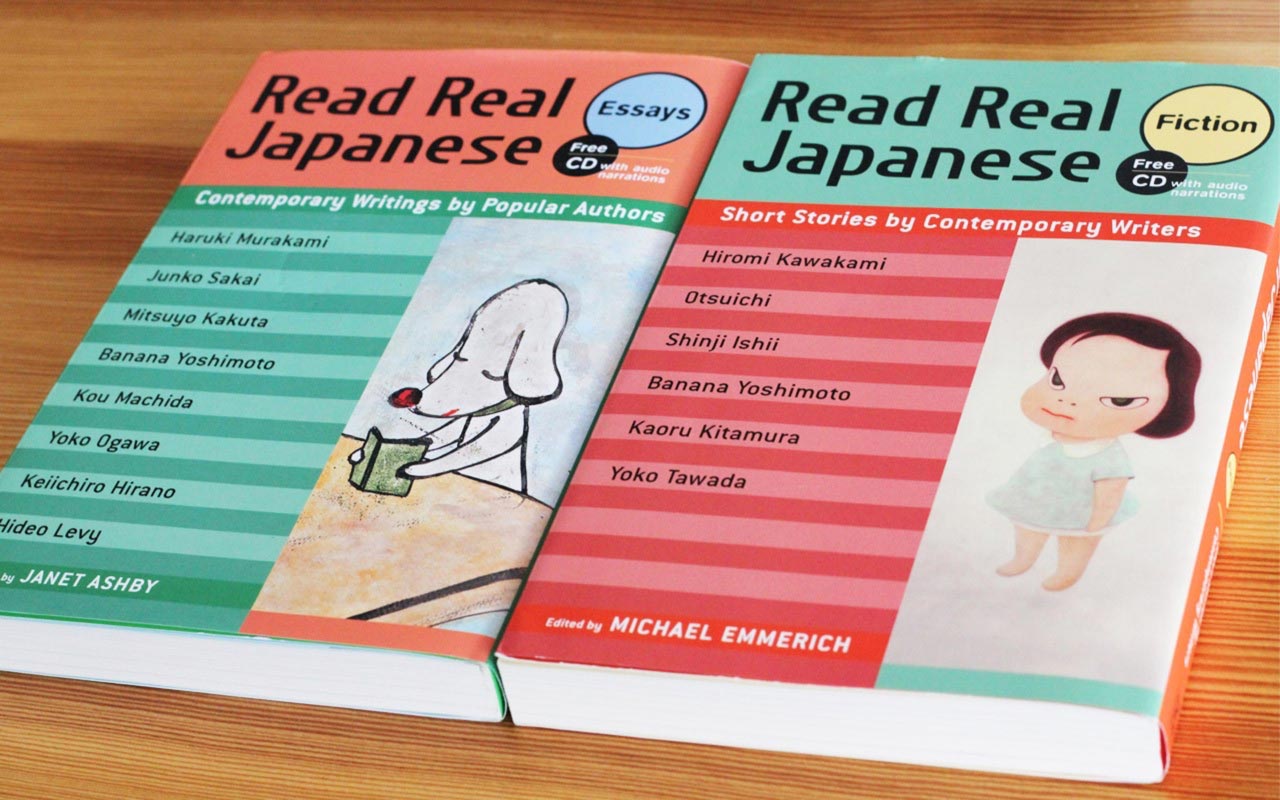
Read Real Japanese is a book series with both essays and short stories for Japanese language learners. Read Real Japanese: Contemporary Writings by Popular Authors contains eight essays by current, popular Japanese authors. Read Real Japanese: Short Stories by Contemporary Writers on the other hand contains six short stories by another set of current authors. In terms of layout, Japanese is on one side (vertical) and English is on the other (horizontal). However, the English included in this text are not direct translations, per se. Rather, they communicate the overall meaning of the corresponding sentence or phrase, so one could call them a gloss of the Japanese. Other useful features in these books include the following:
- Detailed translator notes
- Glossary of all used terms
- Accompanying audio by a professional voice actress
- Furigana to aid in reading kanji words
While aimed at intermediate-level students, the stories in these books are actually quite difficult and should more likely be categorized as advanced . You can read more about these books in the full review here .
- Draw it in the drawing area
- Type the name in the text area
- Look for it in the list
- Notice that 漢 is made of several components: 氵 艹 口 夫
- Draw any of these components (one at a time) in the drawing area, and select it when you see it
- Alternatively, look for a component in the list. 氵 艹 口 each have three strokes; 夫 has four strokes
- If you know the meanings of the components, type any of them in the text area: water (氵), grass (艹), mouth (口) or husband (夫)
- Keep adding components until you can see your kanji in the list of matches that appears near the top.
- Draw a component in the center of the area, as large as you can
- Try to draw the component as it appears in the kanji you're looking up
- Don't worry about stroke order or number of strokes
- Don't draw more than one component at a time
Joy o' Kanji - Individual Kanji Essays and Thematic Bundles

- Study all kanji in the collection immediately with Quick Study
- Create Flashcards for the kanji to study with Kanshudo's spaced repetition flashcard system
- View your current Kanji Mastery level for each kanji, as well as a quick summary of readings and meanings
- Download the kanji with readings and meanings for study offline or in another flashcard program


- Find People

Places, Images, Times & Transformations

Search form
Japanese language: an overview, geography and its place in world languages.
Japanese is spoken by some 125 million people in Japan and in pockets outside of Japan, in such places as Hawaii and Brazil where Japanese immigrants settled around the turn of the twentieth century. Speakers of Japanese are also scattered around in Taiwan and Korea where Japanese was the official language during the Japanese colonial period (Taiwan 1895-1945; Korea 1910-1945), although this number is decreasing and the speakers aging. With this many speakers, Japanese is ranked as ninth in the world in terms of number of speakers. A 2006 MLA statistics showed that more than 66,000 study Japanese at the college level and more than 500,000 at the secondary level in the United States.
According to one kind of language classification, Japanese is considered to be an agglutinating language. This means that a word may consist of several meaningful elements chained together. For example, the word (or a 'sentence'?) tataseraretakunakatta single-handedly takes care of the meaning "he did not want to be made to stand." Although the definition of what constitutes a word is by no means indisputable, it is assumed, for the purpose of this essay, that one can distinguish several meaningful elements in this word, i.e., tat- is the verb 'stand', -as- is a causative marker, -erare- marks passive, -taku marks desire, naka- is a negative marker, -tta- indicates completed action. In contrast, languages like Spanish or French are called inflectional languages. For instance, the o ending in the Spanish verb ending -o in vivo, 'I live', contains a host of different types of information: that the verb is first person singular, present tense, indicative mood, etc. Chinese and, to a lesser degree, English belong to yet another language group, called the analytic languages, in which fusion of the inflective or agglutinative sort occurs to much less extent. Ainu, a language spoken in Japan, and now practically extinct, belongs to a fourth language group, called the polysynthetic languages.
There are other ways of classifying languages. If one uses as a criterion the method by which major constituents (such as subject nominal 'S', object nominal 'O', and verb complex 'V') are ordered in canonical sentences, then Japanese is a verb-final language (SOV language, or more generally, XV language) and English is a SVO language. Korean is also XV and Chinese SVO. Among world languages, Japanese and Korean belong to the most common SOV/(XV) type.
Genetic Affiliation of Japanese, Korean, and Chinese
Scholars have long been interested in the question of if and how Japanese is genetically related to other languages in areas that surround the Japanese islands. To solve this question, historical linguists have developed a scientific method of systematic cross-language comparison called the comparative method. Using this method, they have compared language pairs such as French and Spanish, English and Dutch, etc., and have observed systematic and consistent sound changes and little semantic shifts, which allowed them to conclude that these languages are genetically related. In the case of Japanese, scholars have not succeeded in finding a common ancestral language or a sister language, i.e. a language that shares the same ancestral language. Some have speculated that Japanese is related to Tamil, a Dravidian language spoken in southern India and Sri Lanka, to Korean, or to languages in Southeast Asia, but none of these theories has passed the scrutiny of historical linguists.
147 Japanese Culture Essay Topic Ideas & Examples
Looking for interesting topics on Japan? Find them here! This list contains plenty of Japanese culture topics relating to the country’s traditions, art, and social phenomena. Check them out!
🔝 Top 10 Japanese Culture Topics to Write About
🔎 culture-related japan research topics, ✅ japanese topics for presentations, 🏆 best japanese culture topic ideas & essay examples, 👍 good japanese culture essay topics, 💡 interesting japanese culture topics to write about, 📌 simple & easy japanese culture essay titles, ❓ research questions about japanese culture.
- The Cultural Impact of Anime
- The Mystique and Roles of Geisha
- Traditional Japanese Arts and Crafts
- Tea Ceremony in Japanese Culture
- The Beauty of Japanese Gardens
- The Art of Japanese Floral Arrangement
- Festivals and Matsuri in Japanese Culture
- The Code of Bushido and Its Influence on Society
- Pop Culture Phenomena of J-Pop and Kawaii
- Sushi, Ramen, and Other Culinary Delights of Japan
- Environmental Sustainability in Japan
- Shintoism and Its Influence on Japanese Society
- Modernization and Transformation of Japan
- Challenges Related to Japan’s Aging Population
- Japanese Video Games and Their Global Appeal
- The Aftermath of the Fukushima Nuclear Disaster
- The Role of Women in Modern Japanese Society
- Ways of Preserving and Revitalizing Traditional Japanese Arts
- The “Japanese Miracle” of Economic Growth and Technological Advancements
- Achievements, Critiques, and Reforms in the Japanese Education System
- Cherry Blossom Season in Japan
- Symbolism of the Iconic Mount Fuji
- The Legacy of Hiroshima and Nagasaki
- Japan’s Ancient Temples and Urban Landscapes
- How Zen Buddhism Impacts Japanese Aesthetics
- The Beauty and Significance of Origami and Calligraphy
- Japanese Bullet Train and Other Transportation Advancements
- Traditional Japanese Performing Arts: Noh, Kabuki, and Gagaku
- Modern Japanese Literature: Haruki Murakami and Yukio Mishima
- Japanese Business Etiquette, Work Ethics, and Corporate Practices
- Ramen Culture as a Vital Part of the Traditions in Japan Studying the history of the transformation of ramen culture and the role it plays in modern Japanese popular culture helps to explore the uniqueness of the phenomenon and understand the origins of its immense popularity.
- Japanese Animations’ Effects on the Japanese Economy and Their Cultural Influence on Foreign Countries These artists incorporate the characteristic anime stylizations, gags and methodology in their piece of work to produce animations that are a bit similar to Japanese anime. The growing interest among foreign artists in anime is […]
- Culture Comparison Between China and Japan In Japan, it can be proved by the fact that the name Japan is written in the Chinese Kanji and not the Japanese Katakana or Hiragana.
- Disneyland in American, Japanese, European Cultures Due to the popularity of the American culture, Disneyland’s representation of American culture that spreading a positive attitude about life has a significant impact on Disneyland in Asian countries, especially in Japan.
- Japanese Anime and Doujin Culture In the 1980’s the anime spread to other parts of the world including the western world where it has continued to grow in popularity.
- The Influence of Heavy Metal on Japanese Culture In Japan, the association involving the realm of heavy metal music and personal distinctions has been surveyed in a number of studies.
- Process of Modernization and How It Affected the Cultures of China and Japan Among such countries, China and Japan were voted as the most affected nations by modernization process because of the emergent of simple and advanced technologies. This changed gradually with the spread of industrial revolution in […]
- Hip-Hop and the Japanese Culture The prevalence of soul dancing in Japan in the earlier years also formed the basis for the wide acceptance of the hip-hop culture into the Japanese culture because soul dancing was common in the streets […]
- Japan After Globalization: Culture and Ethnocentrism The isolated territorial position of the country, geographical and climatic features, frequent earthquakes, and typhoons had a significant influence on the culture and mentality of the Japanese people.
- Language and Culture: The Honorifics (Speech or System) of Japanese and Korean In Japan, honorific use is determined by the category of the addressee, that is, he/ she might be superior to the addresser, and this corresponds directly to the verb in use.
- Conflict Management in Japanese Culture Japan and its culture truly represent the cultural compromise that determines the development of the entire Japanese spiritual tradition.
- Comparing the USA, China, Japan and the United Kingdom Cultures This diversity is evident in their music, fashion, cuisine, visual arts, cinema and literature and due to the propagation of the same through the media; the American culture has today become the pedestal through which […]
- Japanese Culture and Identity in the Modern Era I strongly believe that Japanese popular culture might lose its identity due to influence from other cultures, which may lead to a slight modification of the culture.
- Globalization and Japanese Cultures This map is in that book and this course because of demonstrating the movement of goods and people across the world from Afrique to Patagonia and Nouvelle-Guinee.
- Researching of the Culture of Japan As for me, I thought that the Arabic language is complicated but after I heard Japanese, I understood it was really hard to learn and speak it.
- Relationships in Japanese History and Culture The preparation of the obento is not easy, it demands some special skills, and, of course, deep knowledge of the traditions.
- Western Pop Culture and Street Fashion of Japanese Youth The research of the topic needs to be preceded by the explanation of the key subjects and notions used in the current paper.
- Chinese Han Dynasty: Comparing to the Japanese Culture Changing the focus to that one of the daily lives of ordinary citizens, the art of the Chinese culture during the Han Dynasty era allowed introducing a significant amount of diversity into the artistic realm.
- The Japanese Culture and Ecological Interests Many Japanese practices have been adopted in the western world due to the popularity of the culture. Among the many cultural practices of Japan, karate is the most practiced one outside the state.
- Violence and War in Japanese Popular Culture 50 years after the end of the war, the effects of the war have continued to influence the Japanese culture and have also affected its relations with other countries.
- Culture and Customs of Japan After WWII It must be admitted, however, in the interests of truth, that the traditional mode of living and ways of thinking, both good and bad, are deeply rooted in the life of the Japanese people of […]
- Comparing Japanese and Chinese Cultures The main difference between the Chinese and Japanese concept of loyalty is that the Chinese people emphasize their loyalty to their family as a top priority.
- Japanese Popular Culture: Anime, Video Games, and the Film Industry This report will investigate the growth and influence of Japanese pop culture through anime, video games, and the film industry. The game was created by a Japanese studio and is built on the concept of […]
- The Growth of Japanese Culture in the Tokugawa Period The principal factor that benefited the growth and progress of the nation after the ascension of Tokugawa Ieyasu to power is the conclusion of the Sengoku period.
- Japan’s History and Culture on a Global Scale 1868 marked a period of the modernization of Japan, with the Meiji restoration leading to the centralization of everything about the emperor.
- Japanese and Southeast Asia Cultures The activities of the warrior were based on the principle of bushido. Human civilization is the main characteristic of the culture in the continent of Asia.
- Japanese Colonialism Impact on the Korean Culture For instance, Faker and Ryang consider the effects that the Japanese culture has had on the Korean one, while Schmidt and Lim deal with the ways in which Korea accepted colonialism and how the country […]
- Age in the American and the Japanese Cultures In the Japanese environment, elderly people are respected and appreciated, whereas in the environment of American society, old people are viewed as dead weight.
- American vs. Japanese Cultures as Adaptive Systems Since the analysis of these cultures will be done from the perspective of the cultural theory, the paper will also examine how each culture influences the development of people, identity, and personality within it.
- Japanese National and Organizational Cultures So it is mandatory for the organization to work out modalities of avoiding the feeling of one culture domineering the organization while making the other cultures seem inferior by promoting intercultural bonding and communicating the […]
- Zen Buddhism Religion in Japanese Culture The uniqueness of Zen is in rejecting the importance of doctrines and emphasizing the role of the spiritual growth of the person through the practice of meditation.
- Daoism Philosophy in the Cultures of the Koreans, Japanese and Chinese Besides, the treatise explores the orientations of the Daoist tradition and the concepts of sages, deities, hell and heaven, and Confucian discourse.
- General Aspects of Japanese Corporate Culture Analysing the corporate culture in Japan, the essay will classify the companies into two: the large and small companies The Japanese culture of management stands out clearly in large corporations.
- Japanese Culture Analysis: Values and Traditions For a manager working with a person from the Japanese culture, understanding how the cultural dimensions apply to the culture will help the manager to work well with the other individuals.
- Diversity Management and Japanese Culture This is because it requires a comprehensive understanding of the cultural values of both the native country and also that of the foreign country in which you are supposed to carry out your business activities.
- Influence of Japanese Culture in Hawaii From the census, it is clear that the culture and the cuisine Hawaii, which are known today, were created by the history of the migration of Japanese to Hawaii when they settled there to work […]
- An Aspect of Politics and Culture of Meiji in Japan In mid 1880’s there was a financial crisis in Japan due to the huge expenses on industrialization. The Sino-Japanese war between 1894and 1895 was due to divergence of interests in Korea involving China and Japan.
- Whaling in Japan: Justifiable by Culture? The gap in reasoning when it comes to utilizing the concept of “scientific research” as a means of justifying the hunting of various whale species by Japanese whalers is the obvious fact that you do […]
- Analysis of “Yuri” Manga as a Peculiarity of Japanese Popular Culture Conclusions of the analysis indicate that yuri manga is not limited to lesbian culture, moreover, it is a significant element of Japanese popular culture.
- Japanese Fascist Ideology and Culture In a fascist authority, the issue of taking control over the people is of great significance and fascist leaders know that for them to control the naivety of the people well then they have to […]
- Traditional Culture No Longer Is Prevalent in Japanese Society However with the phasing of the government policies in to the adoption of the 1870s epoch, it was aimed to enhance the exports of lacquerware to Western countries.
- Cross-Cultural Management: Japanese Culture and Its Workplace Practices This is one of the strategies that can be adopted. This is one of the pitfalls that should be avoided.
- Cultural Evaluation of Japan: Beliefs and Behavior Generally, the culture of Japan is characterized by collectiveness where individualism is not usually a key concept in various practices in different sectors of the economy such as the education system, health care, and politics.
- Influence of the Consumption Phenomenon on Japan’s Social Culture The present society in Japan is founded on the concepts of bettering the welfare of people. Another vital aspect that is worth noting is that the Japanese society is exceptional in because of the presence […]
- Political Economy and Culture in Japan A strong work ethic and management culture in the commerce and manufacturing industry has ensured the prosperity of the Japanese economy. A good example of the interaction of political economics and culture is the case […]
- Issues of Japanese Cultural Identity The other way the anime productions deal with the issues of the Japanese and their cultural identity is by presenting the aspects and ideas that define the people of Japan.
- The Japanese Culture of Ukiyo-E and Ikebana Two areas of the Japanese culture that Mori talks about is Ukiyo-e and Ikebana which are Japanese words that are common to the pre-Meiji artistic works of the Japanese people.
- Japanese Culture vs. Chinese Culture: The Loss of Patriotism
- Anime and Its Effects on Japanese Culture
- Impact of Buddhism on the Japanese Culture
- Chinese and Japanese Culture Comparison and Analysis
- Cultural Globalisation Through Japanese Culture
- Did the Samurai Have a Significant Impact on Japanese Culture?
- Differences Between Korean and Japanese Culture
- Eating Disorders and Self-Harm in Japanese Culture
- Gender Roles in the Japanese Culture
- Hip-Hop Impact on the Japanese Culture
- How Does Sushi Reflect Japanese Culture?
- Overview of Japanese Culture and Communication Features
- Japanese Culture Views on Homosexuality
- How Japanese Culture Has Become So Popular
- Japanese Culture and Its Relation to Buddhism
- How Japanese Culture Affects the Economy
- The Parallels Between Japanese Culture and Military Conflict History
- The Relationships Between Japanese Culture and Politics
- How Reliance Will Get Fit Into the Japanese Culture
- Linking Japanese and South African Culture
- Japanese Culture and the Misconceptions Associated With It
- American Culture and Japanese Culture: Comparative Analysis
- Japanese Culture and Western Influence on It
- The Role of Sexuality in the Japanese Culture
- Japanese Culture: Art, History, and Society
- Japanese Culture and Role of Women in It
- Communication Guide Between America Business Culture and Japanese Culture
- Japanese Culture Factors Influenced the Disclosure of Financial Information
- The Link Between Religions and Japanese Culture
- Japanese Culture: From Ancient to Modern Times
- Social and Geographical Aspects of the Japanese Culture
- Japanese Culture Places High Value on Privacy
- The Gender Problems in the Japanese Culture
- Japanese Culture: Producing Japan in the World
- Key Similarities and Differences Between the Japanese and the American Cultures
- Japanese Culture That Reflects Through Their Writing and Art Forms
- Motivation and Organizational Japanese Culture
- The Odd and Fascinating Japanese Culture
- Tracing Back the Japanese Culture to 10,000 BC
- Understanding the Japanese Culture Through the Warrior Codes of Bushido
- What Is the Influence of Anime on Japanese Culture?
- Are Chinese and Japanese Cultures Similar?
- How Is Cultural Globalization Through Japanese Culture?
- Did the Samurai Have a Significant Impact on Japanese Culture and Historical?
- What Are the Differences Between Korean and Japanese Cultures?
- Are Eating Disorders and Self-Harm Inherent in Japanese Culture?
- What Is the Cultural Assessment of Japanese Culture?
- What Are the Gender Roles in Japanese Culture?
- How Has Japanese Culture Become So Popular?
- How Dose Japanese Culture Affects the Economy Cultural?
- What Is the Attitude Towards Homosexuality in Japanese Culture?
- What Are the Features of Communication in Japanese Culture?
- How Reliance Will Get Fit Into the Japanese Culture?
- How Does Japanese Culture Affect Japanese Business?
- What Are Some Misconceptions About Japanese Culture?
- What Is the Place of Women in Japanese Culture?
- What Do You Need to Know About Japanese Culture Before Going to Japan?
- How Did Japanese Culture Change From Ancient Times to Modern Times?
- How Is Japan’s Culture Reflected in Their Writing and Art Forms?
- What Are the Differences Between American and Japanese Cultures?
- How Is Sexuality Interpreted in Japanese Culture?
- How Does Japanese Culture Spread Abroad?
- What Is the Place of Religion in Japanese Culture?
- What Are the Socio-Geographical Aspects of Japanese Culture?
- What Is the Place of Food in Japanese Culture?
- How Can Japanese Culture Be Understood Through the Warrior Codes of Bushido?
- What Is the Uniqueness of Japanese Culture?
- How Does the West Respond to Japanese Culture?
- What Is the Role of Buddhism in Japanese Culture?
- Chicago (A-D)
- Chicago (N-B)
IvyPanda. (2023, December 21). 147 Japanese Culture Essay Topic Ideas & Examples. https://ivypanda.com/essays/topic/japanese-culture-essay-topics/
"147 Japanese Culture Essay Topic Ideas & Examples." IvyPanda , 21 Dec. 2023, ivypanda.com/essays/topic/japanese-culture-essay-topics/.
IvyPanda . (2023) '147 Japanese Culture Essay Topic Ideas & Examples'. 21 December.
IvyPanda . 2023. "147 Japanese Culture Essay Topic Ideas & Examples." December 21, 2023. https://ivypanda.com/essays/topic/japanese-culture-essay-topics/.
1. IvyPanda . "147 Japanese Culture Essay Topic Ideas & Examples." December 21, 2023. https://ivypanda.com/essays/topic/japanese-culture-essay-topics/.
Bibliography
IvyPanda . "147 Japanese Culture Essay Topic Ideas & Examples." December 21, 2023. https://ivypanda.com/essays/topic/japanese-culture-essay-topics/.
- Culture Topics
- Anime Questions
- Buddhism Topics
- Fashion Essay Titles
- History Topics
- Manufacturing Essay Topics
- Nissan Ideas
- Mitsubishi Essay Titles
- Ceramics Titles
- Hiroshima Topics
- Cultural Identity Research Topics
- Meditation Questions
- Yoga Questions
- Tea Research Topics
- Bicycle Research Topics

Chapter 7: English and the global perspective
7.5.4 Japanese teaching and how to learn it (research essay)
Anonymous English 102 Writer
Learning Japanese can be a struggle. From having to learn and memorize three different writing systems, to completely changing how you think about language, it makes perfect sense for why Japanese is one of the hardest languages to learn. Despite all that however I decided to try and take on the task of teaching it to myself still to no avail. My struggles related to learning Japanese can be linked back to my methods of practice and the bad habits that followed. In this paper I will elaborate on how Japanese is taught in the classroom as well as to show several ways that students have been able to be the most engaged and excited to learn the language. Along with that I will also talk about kanji which is one of the most daunting things about learning the language and some ways to try and combat the task. I will be doing this by answering the following research questions: What is the importance of proper communication within the Japanese learning environment as a student and a teacher as well as what methods can be used to get passed the most challenging hurdle in learning Japanese, Kanji.
To start breaking this down, learning Japanese or any language has its peaks and valleys or the best most engaging parts and the worst or least engaging parts within the classroom setting. Understanding what these are can really help shape the classroom and improve the learning experience. Keeping students engaged in the class means that they will be thrilled to continue the studies which will lead to them keeping and holding on to the information. This leads to the question of “what are these moments of engagement and how can I identify them and use them to my advantage to learn Japanese?”
Well Hiroshi Matsumoto, who is an associate Professor of Japanese Language and Culture at the Soka University of America, conducted an experiment to find out just what these as he calls “Peak Learning experiences” are. He had a group of Americans learning Japanese fill out a survey in which they wrote what part of the class was most memorable and caused the most enjoyment. The number one moment for the most engagement within the class was when students were able to branch out and live as well as communicate with a Japanese host family. When I read this, it sparked a big interest in taking an actual Japanese class, one where I might be able to have this experience as well, rather than just trying to learn it by myself. Being able to use the language outside of the classroom is a particularly effective way to stay engaged and to allow the information to be held onto way after the class has passed. Continuing in the number two spot was being able to communicate with a native speaker of Japanese. Which again is a terrific way to learn as they are able to give feedback right there and then about how the student is doing. The ability to communicate with a native speaker is one of the main reasons I have struggled to learn Japanese myself as I am not able to use the language in any outside situations. The third most engaging reason is the realization of improvement from being able to understand increasingly of the speech. This can be a very motivating factor especially because of how complex the language is to learn. This motivation can cause a boost in engagement and if the students continue to realize their improvement which will increase their drive to want to learn more. The topic of motivation has been studied by countless phycologists in their attempt to learn more about the brain, but the basic gist of it is that students work towards goals to then receive a reward of some kind (Matsumoto 3). This in turn allows for growth and improvement within that said topic however, there are also negative aspects which can also affect the students learning experience in negative ways.
These are referred to in Matsumoto’s study as “‘Negative’ Peak Learning Experiences” which are the lowest points of learning in the classroom or the moments the students find most annoying or just want to forget all together. The number one for this is that students usually have a tough time realizing when they are making any sort of progress. This could be caused by the teacher moving on to new topics too fast or because the students expected to be able to learn it faster than they actually are (Matsumoto 7). This causes a lack of motivation which is not good for engagement. This has been a hurtle for me in my studies because I do not put enough time into each study session, and I have found that I am progressing at a slower pace than I want to be. The second one that causes the most struggle is having to learn and memorize kanji which is the largest most extensive writing system used in Japanese. It is comprised of well over 50,000 different symbols however a learner only must know about 2,000 of those to be able to read fluently. This can cause a major lack of motivation just from the sheer number of symbols that need memorized. The third most negative part of some classes according to the survey is the fact that they do not offer opportunities to allow for communication with Japanese speakers outside of the classroom. This can cause the students to think that it is just another class needed to be took and not actually anything worth using outside the classroom. This can also cause a major drop in motivation which causes major engagement loss. This has probably been my main point of demotivation as besides watching anime I have no other reason to learn it. Stating these downsides that students have faced should be used as information for what to avoid when trying to learn it yourself. Another negative aspect of learning Japanese to watch out for is the anxieties of speaking the language withing the class.
Sure, sitting in a class memorizing symbols is something that needs to be done however taking those symbols and forming sentences with them to be spoken can cause a lot of anxiety especially to shy or new learners. According to author Kazu Kitano in her article “ Anxiety in the College Japanese Language Classroom ” there can be a couple reasons which can cause students to feel anxiety when having to speak or use Japanese orally. One of those is when students compare themselves to their peers. According to Kitano’s study the higher skilled the class was the more students tended to have higher anxiety because they think that more is expected of them (Kitano 6). If the student fears not being able to meet the expectations of the class, the student will have a higher chance of being very anxious when doing speaking exercises. Another cause for student anxiety is when the student compares themselves to a native speaker. It is hard to avoid this because a lot of the material used to study involves a native speaker whether it is the teacher or the media or both there is always this hurdle (Kitano 11). It is important to avoid having too much anxiety in the classroom as it can cause students to believe that they cannot improve or are not making progress. This is because they compare themselves to the best students in the class or a native speaker and this makes them think that they have not improved. Hopefully saying the negatives surrounding the topic can show the hardships associated with learning Japanese and will allow you to combat and work around those challenges.
Japanese usually taught with a textbook right? Well, some textbooks do not go over the more informal and more natural conversations that are more normal for native Japanese speakers. I believe this should be an essential part of the earlier classes as having simple conversations are more appealing than going over all the complex rules. After all the reason I wanted to learn Japanese was because I wanted to understand the conversations used in anime and I highly doubt it is all formal. Yoshiko Matsumoto and Shigeko Okamoto state in their paper “ The Construction of the Japanese Language and Culture in Teaching Japanese as a Foreign Language ” that understanding the importance of when to be formal and when to be informal can allow for much more socially acceptable conversation (5). For example, when communicating with family its more socially acceptable to be more direct with your speech as it shows you are willing to be blunt which in turn shows respect (Matsumoto and Okamoto 6). If I were to speak to my mom in what the textbooks tell me while its technically correct doing so would seem like I am being distant. The formal nature of most textbooks can cause struggles with learning what is socially acceptable especially if there is no native speaker to help point that out. In fact, Japanese teachers have been found to teach in a more formal tone than their English counterparts even when Japanese is said to be the more informal language (Matsumoto and Okamoto 7). I feel like it would be more effective to integrate more informal forms of speech into earlier class rather than just all formal as it can allow students to get what most want early on (the ability to show off their new language skills). This would also promote more fun student to student conversations in Japanese which would give them another fun way to practice speech.
This brings me on to another way to pull new learners in, anime, which has some similarities to cartoons here which unlike cartoons here is a way more mainstream thing. That is how I first got interested in the Japanese culture and language, through watching a lot of anime. Anime provides a very visual and easy to interact with medium that would be a terrific addition to the beginning Japanese classroom. In the paper “The Use of Anime in Teaching Japanese as a Foreign Language” written by Chan Yee Han and Wong Ngan Ling they talk about how there is an extraordinarily strong coloration between people who watch anime and people who want to learn Japanese (1). The anime scene is full of many different genera and concepts that could all aide in teaching especially since it is so mainstream over in japan. Another reason anime is an especially useful tool in teaching is watching anime stimulates the visual part of the brain as well as the analytical part of the brain rather than just out of the book teaching which is just analytical (Chan Yee Han and Wong Ngan Ling 2). Since the brain uses the right side to process visual information and the left side for analytical information watching anime after doing some analytical studies would not be as tiring if it was just the analytical part. There is also a lot of different activities that can be added on to make the anime more classroom friendly like doing listening activities or have the students try and make their own dub. These activities would keep my interest in learning Japanese especially since I have such a big interest in it. Considering how much the popularity for anime has gone up it would make sense that there would be many new and excited students willing to take on the challenge of learning Japanese. Overall anime is a great tool that can be used to keep motivation in early learners up as well as engaged as it supplies a nice visual and easier to understand method if it is portrayed in a nice manner.
My experiences learning Japanese have been subpar to say the least as I have been trying to learn it on my own in my own free time and because of that it has become particularly challenging. It started when I decided to watch subbed anime instead of the English dubs since some anime’s did not have one. This opened me up to the sounds of Japanese and I started noticing similar sounds and phrases. This led me to want to try and learn Japanese to see maybe if I could learn to not have to use the subtitles. I knew it would be a lot of work and quite a lengthy process, but I did not even know about kanji at the time which I think will be my hardest challenge to be able to learn. I still have only really used Duolingo to practice the specific symbols of hiragana and some of katakana. However, in researching this topic there were many times that I would get distracted by the Japanese that was used in the papers as examples and I would spend time analyzing and breaking down those. I do still want to take an actual Japanese language class at some point and see how much more affective it will be. In doing the research for this paper I was constantly getting sucked into the articles and after reading them it made me even more motivated to want to learn Japanese, even try to transfer over there to study abroad.
With that question thoroughly answered there is still another that I would like to try and tackle and that is “what methods can be used to get passed the most challenging hurdle in learning Japanese, Kanji?” Learning kanji is a big struggle to overcome to be able to read and understand most Japanese. So, what is it exactly and why is it such a struggle? Well, kanji refers to one of three writing systems used by the Japanese and is basically the Chinese writing system but baked into Japanese. As stated earlier there are over 50,000 different kanji symbols all for something different. The average native user only knows about 2,000 of those however and less to be able to understand it well enough (Scott). However, 2,000 is a lot and the native speakers have been learning them all throughout their school years so it can be a real challenge to anyone foreign trying to memorize the same amount in a fraction of the time.
One way to approach this challenge is using a flipped classroom to allow for specific out of class time to go towards learning kanji then actual class can be spent on other things which are more useful to learn face to face. Writer Yuko Enomoto Prefume states in their work “ Exploring a Flipped Classroom Approach in a Japanese Language Classroom: a Mixed Methods Study ” that the flipped classroom method would be able to be very affective when out of class video lectures and other exercises related to the class time is combined with the normal classroom activities (Prefume 57). This allows for more time to be spent both situations able to have students learning there by doubling the about of content per class. Having the extra time in class allows for teachers to try a variety of different teaching techniques as well allowing for the creation of new more effective teaching (Prefume 56). Adding on to the aspect of the online portion learning kanji online is a decent option. In the article “ What Motivates L2 Learners in Acquisition of Kanji Using CALL: A Case Study ” written by Satoko Van Aacken, he talks about how using computers to study and learn kanji can enable students to go at their own pace because everyone learns differently. Applying this concept to the flipped classroom method and I propose fully online kanji lessons outside of class while in class can focus on the more complex aspects of the language in more detail. Plus, if it is at all possible the kanji courses should be made with the intention of students own pace with grading being based on individual progress rather than a specific number, AKA Quality over quantity. The online courses could also have testing days, but they are based on the students’ progress rather than a set number of kanji. This would allow for slower learners to move at a less frighting pace and fast learners can study to their hearts content. As long as the whole kanji learning process is individual with only some small check-ins in class that should eliminate a lot of the anxiety from the slow learners comparing themselves to the fast learners. While this method is a good use of time some problems can arise. For example, procrastination, which will most likely be the most challenging factor with keeping the students engaged. Having to do a lot of work studying out of class can cause a lot of focusing problems as well. I am a good example of that as I am a visual learner. I struggle learning out of a book and online school is quite the pain. Especially because of the recent corona virous pandemic causing all classes to be switched to online I fell way behind especially in classes I did not enjoy. It is all about motivation if your able to keep a student motivated to continue the class then they will continue to complete assignments and be able to learn something from the class.
Due to the pandemic most if not all classes had to move over to online methods of teaching at some point. So, how did the transition to online effect kanji learning? Well not the best according to a study done by Linna Meilia Rasiban in their article “ Web-Based Kanji Characters Learning: Undergraduate Students’ Conception. ” The study shows that while using web applications to learn kanji during the pandemic did work and there were 72% positive responses from the students there is still a quarter of the students surveyed who did not like it as much (Rasiban 3). However, despite that result there was still a positive overall response and is definitely moving in the right direction. I would argue that in the future it would be a great benefit to be able to learn kanji strictly online in a way that is engaging to as many students as possible. This could also be useful for people just trying to learn the language outside of school rather than using just flashcards and bruit force. I want to share some ideas and concepts to help with learning kanji that I learned from Greg Scott in his article “ How to Learn Kanji: 7 Tips from a Guy Who Did It and Survived. ” One of the tips he talks about is that instead of learning each full kanji it is possible to break down some into common radicals. Radicals are the smaller shapes that make up the full kanji and if there are similar radicals in separate kanji then they usually can be pronounced in similar ways. Another one is if you can match and allow connection of images to kanji it can make it a lot easier to remember them. Another one that I think would benefit me the most would be to show my writing to a native speaker and have them point out the mistakes, so it makes it easier to correct those mistakes. The most common method for taking on kanji is to just brute force study as many as possible and that is why it always seems the most daunting thing to new learners. I haven’t even started trying to learn any kanji yet even though I know I must however if I want to learn the language, I just need to allocate more time as it is very time consuming.
An interesting fact about remote Japanese learning is that there was actually a study done back in 1993 about having satellite instruction. They had a bunch of students around the U.S. participate to try and see if it would be a good option to bring Japanese to smaller schools that maybe did not offer as many languages. The results of the study showed basically the same thing as online schools now that motivation is a struggle and the students who kept the most motivation was those who were visual learners (Rebecca Oxford et al. 11). I thought this study was super interesting to read especially because of the current pandemic situation currently going on and how similar it ended up being even with the massive leap in technology since then.
In conclusion, the Japanese language is quite the challenge to learn but it sparks quite the interest as I work towards learning it as best I can. The classroom has a lot of different methods of teaching through communication as well as some possible alternative routes that can be taken to improve the classes. On top of that learning kanji can cause a lot of new learners to give up as it is quite the daunting task of memorization which can be very time consuming. Hopefully this paper was able to add some insight to learning Japanese or just any language in general by showing some of the bad things to allow for avoidance in the future as well as the best things to pull in an interest. All in all I really enjoyed researching this topic and reading all the articles have given me more motivation to hopefully take an actual Japanese class next year to try and improve my skills. I really liked reading the tips for learning kanji too and I feel like it will be a good use to me in the future.
Works Cited
Chan, Yee Han, and Ngan Ling Wong. “The use of anime in teaching Japanese as a foreign language.” Malaysian Online Journal of Educational Technology 5.2 (2017): 68-78.
Kitano, Kazu. “Anxiety in the college Japanese language classroom.” The Modern Language Journal 85.4 (2001): 549-566.
Matsumoto, Hiroshi. “Peak learning experiences and language learning: A study of American learners of Japanese.” Language, Culture and Curriculum 20.3 (2007): 195-208.
Matsumoto, Yoshiko, and Shigeko Okamoto. “The construction of the Japanese language and culture in teaching Japanese as a foreign language.” Japanese Language and Literature
Oxford, Rebecca, et al. “Japanese by satellite: Effects of motivation, language learning styles and strategies, gender, course level, and previous language learning experience on Japanese language achievement.” Foreign language annals 26.3 (1993): 359-371.
Prefume, Yuko Enomoto. Exploring a flipped classroom approach in a Japanese language classroom: a mixed methods study. Diss. 2015.
Rasiban, Linna Meilia. “Web-Based Kanji Characters Learning: Undergraduate Students’ Conception.” 4th International Conference on Sustainable Innovation 2020–Social, Humanity, and Education (ICoSIHESS 2020). Atlantis Press, 2021.
S Junjie, Shan, et al. “Analysis of dialogues difficulty in anime comparing with JLPT listening tests.” Procedia computer science 112 (2017): 1345-1352.
Scott, Greg, “How to Learn Kanji: 7 Tips from a Guy Who Did It and Survived” Enux Education Limited 2021, https://www.fluentu.com/blog/japanese/how-to-learn-kanji/
Van Aacken, Satoko. “What motivates L2 learners in acquisition of Kanji using CALL: A case study.” Computer assisted language learning 12.2 (1999): 113-136.
Understanding Literacy in Our Lives by Anonymous English 102 Writer is licensed under a Creative Commons Attribution-NonCommercial-NoDerivatives 4.0 International License , except where otherwise noted.
Share This Book
Created for expats living in Japan
- Living in Japan
Why Study Japanese? The Overlooked Importance of Learning the Language
- Learning Japanese

This article is contributed by ICI (International Communication Institute) Step Up Nihongo team .
Anyone having a go at learning Japanese must have done so for a reason. I feel safe in saying it was primarily for practical reasons, like asking where the bathroom is; getting along well with your Japanese in-laws; getting a better job ; conducting business in Japan; making Japanese friends; enrolling in a Japanese university; or reading manga . However, there is another important reason for studying Japanese, one which is often overlooked or neglected.
The Hidden Value of Learning Japanese

People say, and you would probably agree, that you can see your own country better and more objectively when you are out of that country. It is what we gain by assuming a wider, objective perspective. It should come as no surprise that this same effect takes place when we study languages.
Language is a natural and historical product nurtured among, and cultured by, the people who speak it. It contains their culture and is a record of their mind-sets, their points of view. Their perspectives on life, the world, living, values and other topics are woven deeply into their language.
In important ways, English and Japanese are two extreme ends of a continuum of point of view: One assumes directness, while the other, indirectness. The Japanese language is comprised of a number of mindsets which are hardly present in English or rarely encouraged by English speakers. It contains certain points of view which are beyond the experience of ordinary English natives – in fact, they may hardly believe that such points of view could even exist. By studying Japanese correctly, you will get a new perspective on English and get to know more about it. Let me give you a couple of examples.
If you have begun to study Japanese even a bit, I’m sure you know how to say “hello” or “how are you?” in Japanese. Yes, konnichiwa . But does it really mean that? NO, it just means “(as for) this day.” Actually, it is the beginning bit of something like “ Konnichiwa gokigen ikaga desu ka? ” (How are you today?). Psychology that the most important part be only implied but "unsaid" is an underlying feature of the Japanese communication mindsets. So, often people start out saying something but may leave the sentence unfinished, and yet you are expected to know what they really wanted to mean.
Onegai-shimasu
I’m sure you are familiar with this one. This is a very useful phrase I strongly recommend that you remember. Whenever you need any help or a favor, say “ Onegai-shimasu ” which could be translated as “I humbly request.” Japanese has a clear, built-in form to exhibit that you are being humble and modest to show your respect to the counterpart. This attitude is always expected in daily life, esp. in business environment.
When you meet a Japanese person for the first time, you’d say “ Doozo yoroshiku ” which is equivalent to “I’m pleased to meet you.” Again, however, this does NOT mean that. It is a part of “ Doozo yoroshiku onegai itashimasu ” which would literally translate “I humbly request your nice treatment.” As you see, this is far from the mindset of its English equivalent.
Expanding your horizons like this is a very important aspect of learning a foreign language. Thanks to the great difference between English and Japanese – arguably greater than between any other two living languages – Japanese may be the best choice for those wanting to rediscover English, especially if you are a native.
Gaining Insight through Perspective: The Apple, Gravity, and Discovery

Now, here is a question:
You have heard, no doubt, that Sir Isaac Newton discovered the universal law of gravity by watching an apple fall from a tree. But how could this be? Surely this phenomenon was not newly observed by him – it must have been previously observed by many other people. Which brings up a question: Why did HE, and not someone else, discover the law? How could HE connect an apple falling downwards with the law of gravity? We all know this famous story since we were young, but something just does not feel right.
You could ask others about this, but basically the answers will be something like:
- This is just a metaphorical story that teaches you that a very commonplace occurrence could lead to a world-changing, great discovery.
- This story is to illustrate what a genius Sir Isaac Newton was.
Somehow, these answers are not convincing, at least to me. Something was missing in the logic. The apple’s fall did NOT logically lead to the discovery of universal gravitation, no matter how I thought it through.
Then, one day, I had a revelation.
As long as your point of view is several meters away from the apple tree, it is impossible to really see the workings of gravity in the scene. However, imagine yourself watching the same phenomenon from somewhere far out in space – from the moon, for instance. Would apples in the North pole, Antarctica, Australia, Japan and other countries all seem to be “falling down”? You can place a globe in front of you to help illustrate the phenomenon. The Antarctic apple would “fall up,” unless you were to flip the globe upside down. Even a child could see that the apple was being pulled by the Earth.
I am pretty sure that Isaac Newton set his point of view somewhere farther out in space when he saw the apple fall off the tree. His greatness lies not only in his instinct, but also in that he was able to control his point view to objectively view what he saw from a wider perspective.
The lesson here is that by controlling one’s points of view, anybody can readily see deeper truths.
The Power of Understanding Language Mindsets
Typically, when Japanese people study English, they are not taught the importance of understanding the English-language mindset, nor are they made aware of it, unfortunately. Rather, this critical element is disregarded completely. It is regrettable that such a great opportunity to expand one’s horizons is being lost and wasted.
Every language has its culture embedded in it. Japanese is different from Western languages because Japanese culture is different. Learning Japanese will change your worldview.
If You Would Like to Learn Japanese
Discover Japanese e-learning and online classes at ICI (International Communication Institute) . Customize your learning experience to fit your schedule. Click the image below to learn more.

Related Posts

Japanese Voice Translator / Interpreter Apps
Japanese–English and English–Japanese Voice Translation / Interpreter Apps, including completely free apps. They have text translation, speech translation (text-to-speech, interpretation), photo translation online and offline.
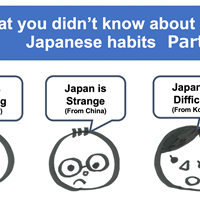
Things You Didn't Know About Japan and Japanese People Part 2
International students seem to have trouble conveying their praise. In Japanese, "praise" means "evaluation," and it is common for the superior to praise the inferior. It may sound rude to say "Are you free?" to a superior.

Business Telephone Conversations in Japanese
Being able to communicate on the phone in Japanese isn't as hard as you might think. Here are some business Japanese phrases you can use when answering the phone in an office environment.
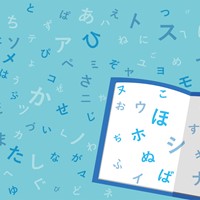
Japanese Idioms: A List of Expressions Based on Body Parts
The Japanese language is filled with colorful idioms and expressions. Check out our comprehensive list of Japan’s most popular idioms about body parts.
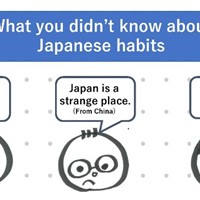
What you didn’t know about Japanese habits
There are many habits and things that are commonplace in Japan the foreign residents or visitors may find strange or perhaps dangerous if done in their home countries. In this short article Eri, a Japanese teacher, recounts some of the more interesting questions and comments she has had from her students who are new to Japan.

Learning Japanese for Free: Great Online Tools
Learning Japanese online has never been easier. There are a lot of great free online materials for learning Japanese online and they are perfect for self-study. In this article we cover some of the best learning websites, apps, and tools for studying Japanese.

Access Ranking

Turn Your iPhone or Android into a Mobile Suica/PASMO IC Card

Omamori: A Guide to Japanese Amulets

Earthquake App Options: Smart Choices for your Smartphone

IC Cards in Japan: Traveling with Suica, PASMO, ICOCA and More

Japan News in English: Great Media Outlets for Expats
© 2024 Japan Living Guide. All Rights Reserved.

Murakami Haruki’s America: Talk, Taste, and The Specter of the Untranslatable
- Brian Hurley
The world-famous Japanese novelist Murakami Haruki (1949-) has been said to write universally-legible, made-to-be-translated fiction that is designed to circulate through the channels of global cultural commerce unimpeded by the thorny particularities of local specificity. But this article explores a different side of Murakami—a side that attuned to the untranslatable particularity of socially contextualized language as he heard it spoken around him during his time living in the United States in the early 1990s. Drawing on the scholar of comparative literature Michael Lucey’s approach to reading “the ethnography of talk,” the analysis focuses on how Murakami reconstructs a conversation about jazz that he had with a Black American interlocutor in New Jersey in the short essay “The Road Home From Berkeley” ( Bākurē kara no kaerimichi ), which appears in his volume of essays about living in the United States titled The Sadness of Foreign Language ( Yagate kanashiki gaikokugo , 1994). As the article compares the styles of speaking documented in “The Road Home From Berkeley” with those that appear in the English- and Japanese-language versions of Miles Davis’s autobiography Miles (which Murakami discusses in “The Road Home From Berkeley”) and J.D. Salinger’s Catcher in the Rye (which Murakami translated himself), it reveals how Murakami has reflected on the specter of the untranslatable that haunts the global circulations of literature and pop culture.
Copyright (c) 2024 Brian Hurley

This work is licensed under a Creative Commons Attribution 4.0 International License .
Authors who publish with this journal agree to the following terms:
- The Author retains copyright in the Work, where the term “Work” shall include all digital objects that may result in subsequent electronic publication or distribution.
- Upon acceptance of the Work, the author shall grant to the Publisher the right of first publication of the Work.
- Attribution—other users must attribute the Work in the manner specified by the author as indicated on the journal Web site;
- The Author is able to enter into separate, additional contractual arrangements for the nonexclusive distribution of the journal's published version of the Work (e.g., post it to an institutional repository or publish it in a book), as long as there is provided in the document an acknowledgement of its initial publication in this journal.
- Authors are permitted and encouraged to post online a pre-publication manuscript (but not the Publisher’s final formatted PDF version of the Work) in institutional repositories or on their Websites prior to and during the submission process, as it can lead to productive exchanges, as well as earlier and greater citation of published work. Any such posting made before acceptance and publication of the Work shall be updated upon publication to include a reference to the Publisher-assigned DOI (Digital Object Identifier) and a link to the online abstract for the final published Work in the Journal.
- Upon Publisher’s request, the Author agrees to furnish promptly to Publisher, at the Author’s own expense, written evidence of the permissions, licenses, and consents for use of third-party material included within the Work, except as determined by Publisher to be covered by the principles of Fair Use.
- the Work is the Author’s original work;
- the Author has not transferred, and will not transfer, exclusive rights in the Work to any third party;
- the Work is not pending review or under consideration by another publisher;
- the Work has not previously been published;
- the Work contains no misrepresentation or infringement of the Work or property of other authors or third parties; and
- the Work contains no libel, invasion of privacy, or other unlawful matter.
- The Author agrees to indemnify and hold Publisher harmless from Author’s breach of the representations and warranties contained in Paragraph 6 above, as well as any claim or proceeding relating to Publisher’s use and publication of any content contained in the Work, including third-party content.
- The Author agrees to digitally sign the Publisher’s final formatted PDF version of the Work.
Developed By
Information.
- For Readers
- For Authors
- For Librarians
ISSN 1536-7827 (print) 2326-4586 (online)

- Share full article
Advertisement
Supported by
The Saturday Profile
Documentary Filmmaker Explores Japan’s Rigorous Education Rituals
Her movies try to explain why Japan is the way it is, showing both the upsides and downsides of the country’s commonplace practices. Her latest film focuses on an elementary school.

By Motoko Rich
Reporting from Tokyo
The defining experience of Ema Ryan Yamazaki’s childhood left her with badly scraped knees and her classmates with broken bones.
During sixth grade in Osaka, Japan, Ms. Yamazaki — now a 34-year-old documentary filmmaker — practiced for weeks with classmates to form a human pyramid seven levels high for an annual school sports day. Despite the blood and tears the children shed as they struggled to make the pyramid work, the accomplishment she felt when the group kept it from toppling became “a beacon of why I feel like I am resilient and hard-working.”
Now, Ms. Yamazaki, who is half-British, half-Japanese, is using her documentary eye to chronicle such moments that she believes form the essence of Japanese character, for better or worse.
To outsiders, Japan is often seen as an orderly society where the trains run on time, the streets are impeccably clean, and the people are generally polite and work cooperatively. Ms. Yamazaki has trained her camera on the educational practices and rigorous discipline instilled from an early age that she believes create such a society.
Her films present nonjudgmental, nuanced portraits that try to explain why Japan is the way it is, while also showing the potential costs of those practices. By showing both the upsides and downsides of Japan’s commonplace rituals, particularly in education, she also invites insiders to interrogate their longstanding customs.
Her latest film, “ The Making of a Japanese ,” which premiered last fall at the Tokyo International Film Festival, documents one year at an elementary school in western Tokyo, where students align their shoes ramrod straight in storage cubbies, clean their classrooms and serve lunch to their classmates.
In an earlier documentary, “ Koshien: Japan’s Field of Dreams ,” Ms. Yamazaki showed high school baseball players pushed to physical extremes and often reduced to tears as they vied to compete in Japan’s annual summer tournament .
In the schools highlighted by Ms. Yamazaki, both films show what can at times seem like an almost militaristic devotion to order, teamwork and self-sacrifice. But the documentaries also portray teachers and coaches trying to preserve the best of Japanese culture while acknowledging that certain traditions might damage the participants.
“If we can figure out what good things to keep and what should be changed — of course, that’s the million dollar question,” Ms. Yamazaki said.
“If we don’t have those what seem ‘extreme’ parts of society — or more realistically as we have less of it, as I see happening,” wrote Ms. Yamazaki in a follow-up email, “we might see trains in Japan be late in the future.”
Some extreme scenes show up in her films. In “The Making of a Japanese,” for instance, one first-grade teacher strongly chastises a first grader and makes her cry in front of her classmates. But the film also shows the young student conquering her deficiencies to proudly perform in front of the school.
Ms. Yamazaki “showed the reality as it is,” said Hiroshi Sugita, a professor of education at Kokugakuin University who appears briefly in the film lecturing the school’s faculty.
Having grown up in Japan and then trained as a filmmaker at New York University, Ms. Yamazaki has a one-foot-in, one-foot-out perspective.
In contrast to a complete “outsider who is exoticizing things, I think she is able to bring a perspective that has more respect and authenticity,” said Basil Tsiokos, senior programmer of nonfiction features at the Sundance Film Festival who selected two of Ms. Yamazaki’s films for documentary showcases in Nantucket and New York.
Ms. Yamazaki grew up near Osaka, the daughter of a British college professor and Japanese schoolteacher, and spent summers in England. When she transferred from a Japanese school to an international academy in Kobe for her middle and high school years, she was surprised that janitors, not the students, cleaned the classrooms. Relishing the freedom to choose electives, she enrolled in a video film class.
She decided to leave Japan for college partly because, as someone of multiracial heritage, she was tired of being treated as a foreigner.
When she arrived at N.Y.U., most of her classmates wanted to direct feature films. Ms. Yamazaki enrolled in a documentary class taught by Sam Pollard , a filmmaker who also worked as an editor for Spike Lee and others, and embraced the medium.
Mr. Pollard spotted her talent right away. “You have to apply yourself to figure out what the story is,” he said. “She had that.”
While she was still an undergraduate, Mr. Pollard offered Ms. Yamazaki some editing work. After graduation, she said, “a lot of my friends were smoking pot and were these artist dreamer people with grand ideas.” But she took on multiple editing gigs to support her passion projects. Even now, editing helps support her documentary work.
She attributed her work ethic to her years in Japanese elementary school. “People would be like, ‘you’re so responsible, you’re such a good team player, you’re working so hard,’” she recalled. She regarded her efforts as “below average in terms of a Japanese standard.”
She met her future husband, Eric Nyari, while interviewing for a job to edit a documentary about the Japanese composer Ryuichi Sakamoto that Mr. Nyari was producing. She didn’t land the job, but the pair became friends. Mr. Nyari, who describes her as “a dictator — in a good way,” is now the primary producer of all her documentaries.
Ms. Yamazaki made the leap from editing to professional directing with a short film for Al Jazeera, “ Monk by Blood ,” that examined the complicated family and gender dynamics at a Buddhist temple in Kyoto.
Next she chose a subject that had nothing to do with Japan. “ Monkey Business: The Adventures of Curious George’s Creators ” brought her more attention as it screened at film festivals in Los Angeles and Nantucket.
Ms. Yamazaki and Mr. Nyari rented an apartment in Tokyo seven years ago and Ms. Yamazaki began work on “Koshien.”
One of the high schools she wanted to use in the film is where the Los Angeles Dodgers superstar Shohei Ohtani had trained, but his former coach, Hiroshi Sasaki, was wary after years of media requests.
Mr. Sasaki softened when he saw how Ms. Yamazaki showed up with her crew in the morning, often before the players arrived, and stayed late at night to film the team cleaning the field.
One afternoon, after he had barred her from a particularly dramatic practice and then ribbed her for not filming it, she burst into what she said were tears of frustration because her cameras had missed such a great scene.
“I thought this person really is serious about this and I was so moved,” said Coach Sasaki in a video interview with The New York Times. The morning after the practice, he invited her to turn on the camera while he watered his collection of bonsai plants and answered questions about his coaching philosophy. That episode became a pivotal scene in the documentary.
Ms. Yamazaki, who films her subjects for hundreds of hours, captures vulnerable moments that reveal as much to her subjects as to audiences.
In one scene in “Koshien,” the wife of another high school baseball coach says she resented her husband’s career because it often took him away from their three children.
“Seeing the movie, it was my first time knowing these feelings,” said Tetsuya Mizutani, the coach, whose old-fashioned, hard-driving style is highlighted in the film.
Such discomfiting moments distinguish Ms. Yamazaki’s storytelling from most Japanese documentary filmmakers, said Asako Fujioka, former artistic director of the Yamagata International Documentary Film Festival. Filmmakers in Japan try to treat subjects “kindly, like a caring mother or friend,” whereas Ms. Yamazaki “is very bold in the way she creates drama.”
Seita Enomoto, the teacher who chastises a student in “The Making of a Japanese,” said that although some viewers have criticized him, he appreciated that the film also showed the child learning that “she should work hard, and how she changed and succeeded.” Ms. Yamazaki and Mr. Nyari hope next to make a documentary about new recruits at a large Japanese employer, where young staff start with training that can lead to lifelong work at the same company.
For now, they are raising their young son in Tokyo and have enrolled him in a Japanese nursery school. Although human pyramids have been banned by schools because of parental complaints, Ms. Yamazaki hopes her son will absorb some of the values that exercise taught her.
“It was a weird personal experience,” she said, “that I look back on fondly.”
Kiuko Notoya contributed reporting.
Motoko Rich is a reporter in Tokyo, leading coverage of Japan for The Times. More about Motoko Rich

IMAGES
VIDEO
COMMENTS
Japanese essay format. You can write Sakubun according to the 4-part structure 起承転結, including: 起 - introduction, 承 - development, 転 - turn, 結 - conclusion. Or you can write Sakubun according to the 3-part structure - 三段構成 (Sandan kousei), including: 序 - opening, 破 - body, 急 - conclusion. To ...
Speculating on the reasons why Japanese students fail to write well-organized paragraphs, we propose that many Japanese students consider English paragraphs to be identical with Japanese danraku. In order to investigate this supposition, this study examines Japanese students' writing — comparing danraku and English paragraph structures. 1. Reply.
Write better Japanese essays and organize the flow of your writing with this list of Japanese essay phrases and transition words. ... Alexis is a Japanese language and culture enthusiast from the Philippines. She is a Japanese Studies graduate, and has worked as an ESL and Japanese instructor at a local language school. ...
A collection of essays by Murakami Haruki who is a best-selling contemporary Japanese writer. Each essay, originally published in a women's magazine "an-an" from 2000 to 2001, is approx. 4-8 pages. No furiganas are provided. (added 4/8/2014) To see a sample text in a new tab, please click on the cover image or the title.
It's actually quite simple to type in Japanese! On a PC, you can go to "Language Settings" and click "Add a preferred language." Download Japanese — 日本語 — and make sure to move it below English. (Otherwise, it will change your laptop's language to Japanese… Which can be an effective study tool, though!) To start typing ...
生 life, birth. 活 vivid, lively. "Block of meaning" is the best phrase, because one kanji is not necessarily a "word" on its own. You might have to combine one kanji with another in order to make an actual word, and also to express more complex concepts: 生 + 活 = 生活 lifestyle. 食 + 生活 = 食生活 eating habits.
In this column, I will introduce four ways to improve your writing skills in Japanese! 1. Copy the example sentences from Japanese textbooks and reference books. Do you have any Japanese textbooks or reference books? The book can be used not only for reading, but also for improving your writing skills.
The "Read Real Japanese" series, comprising one volume each of essays and fiction, provides the real thing — lively writings by contemporary authors. "Read Real Japanese Essays" presents short works by eight established writers, including Haruki Murakami and Banana Yoshimoto. The essays are by turns humorous, insightful, and biting; all are ...
1. 小論文or随筆or評論or感想文. と訳せるとは思いますが、いずれも微妙に意味が違うので、essayは「エッセイ」と記すことが多いです。. 日本においては. essay={エッセイ}⊃{小論文、随筆、評論、感想文}. というようにessayにあたる訳語が多数あり、一 ...
Read Real Japanese is a book series with both essays and short stories for Japanese language learners.Read Real Japanese: Contemporary Writings by Popular Authors contains eight essays by current, popular Japanese authors.Read Real Japanese: Short Stories by Contemporary Writers on the other hand contains six short stories by another set of current authors.
Kanshudo also features synopses of Joy o' Kanji's 'Radical Notes', free essays on most of the 214 standard radicals. To find out more visit our radicals page . For more information on Joy o' Kanji, visit the Joy o' Kanji website ⇗ . Kanshudo is your AI Japanese tutor, and your constant companion on the road to mastery of the Japanese language.
Writing an essay about life in Japan. The essay below has about 1500 words. It is written by an international student in Japan. Opening. 日本に来てから、もう四年半になりました。 Nihon ni kite kara, mou yonnen han ni narimashita. It has been four and a half years since I came to Japan.
Welcome to r/LearnJapanese, *the* hub on Reddit for learners of the Japanese Language. Members Online • ... Hi! I am on the lookout for Japanese YouTube channels primarily focused on instructional "video essays" but I struggle to find any. The few that I do find all seem to be in this extremely annoying ゆっくり音声 type text-to-speech ...
This video demonstrates "How to say Essay in Japanese"Talk with a native teacher on italki: https://foreignlanguage.center/italkiLearn Japanese with Japanese...
In school in America I was taught to structure essays with: An opening paragraph introducing the topic that ends with a thesis statement. Body paragraphs each starting with a strong assertion that supports the thesis, and further sentences expanding on it, backed by evidence. A final paragraph restating the thesis and expanding on why the body ...
Speakers of Japanese are also scattered around in Taiwan and Korea where Japanese was the official language during the Japanese colonial period (Taiwan 1895-1945; Korea 1910-1945), although this number is decreasing and the speakers aging. With this many speakers, Japanese is ranked as ninth in the world in terms of number of speakers.
Tea Ceremony in Japanese Culture. The Beauty of Japanese Gardens. The Art of Japanese Floral Arrangement. Festivals and Matsuri in Japanese Culture. The Code of Bushido and Its Influence on Society. Pop Culture Phenomena of J-Pop and Kawaii. Sushi, Ramen, and Other Culinary Delights of Japan.
7.5.4 Japanese teaching and how to learn it (research essay) Anonymous English 102 Writer. April 2021. Learning Japanese can be a struggle. From having to learn and memorize three different writing systems, to completely changing how you think about language, it makes perfect sense for why Japanese is one of the hardest languages to learn.
Learning a foreign language goes beyond communication—it provides insight into cultures and worldviews. Japanese reflects a unique mindset and perspective. This article uncovers the neglected connection between language and culture in Japanese studies. It highlights missed opportunities for Japanese learners of English to understand the English mindset, emphasizing the need for diverse ...
939 Words4 Pages. Japanese language- Perplexing, yet fascinating. Norbu Zam. (17X5X011) "O genki desu ka". (Introduction to Japanese Grammar) Norbu Zam. (17X5X011) Japanese culture is very unique and beautiful.
Japanese culture is known for its emphasis on clear and effective communication. The various communication styles in Japan play a significant role in social interactions, business dealings, and everyday life.This essay aims to explore the high-context, indirect, and group-oriented communication styles in Japanese culture, as well as the significance of written communication and the challenges ...
The world-famous Japanese novelist Murakami Haruki (1949-) has been said to write universally-legible, made-to-be-translated fiction that is designed to circulate through the channels of global cultural commerce unimpeded by the thorny particularities of local specificity. But this article explores a different side of Murakami—a side that attuned to the untranslatable particularity of ...
The defining experience of Ema Ryan Yamazaki's childhood left her with badly scraped knees and her classmates with broken bones. During sixth grade in Osaka, Japan, Ms. Yamazaki — now a 34 ...